Shabby chic kitchens blend the worn elegance of vintage pieces with the soft romance of cottage style, creating spaces that feel both timeless and inviting. Characterized by light, muted hues, distressed finishes, and a mix of antique and repurposed elements, this aesthetic draws inspiration from the English countryside while embracing modern comforts. From paint-faded cabinets to weathered wood accents, each detail tells a story of age and craftsmanship, making shabby chic kitchens uniquely personal and endlessly charming.
1. Distressed Cabinetry
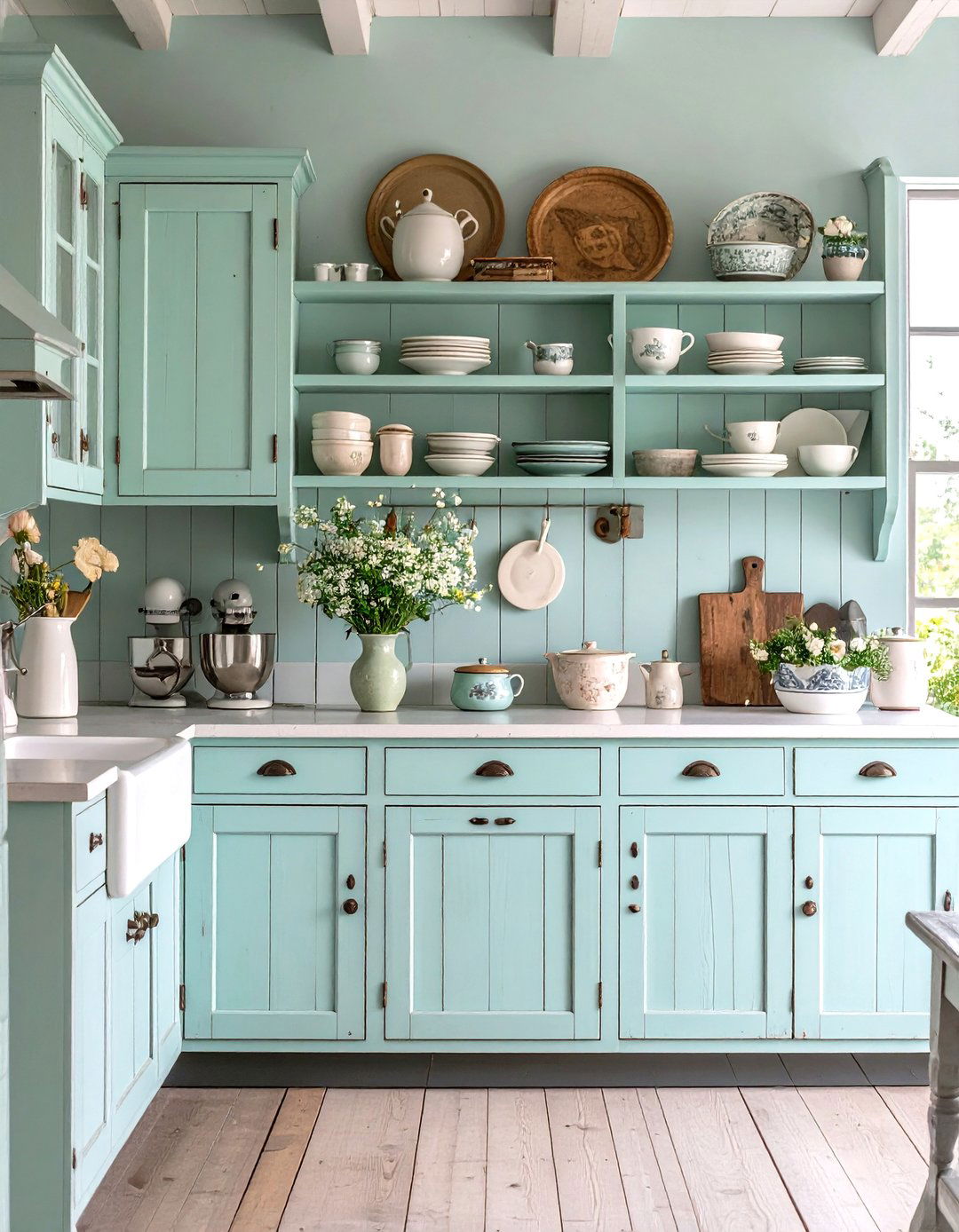
Distressed cabinetry is a hallmark of shabby chic kitchens, achieved by sanding back layers of paint to reveal hints of wood or previous colors beneath. This technique imparts an aged look without compromising modern functionality, as cabinets remain sturdy and fully operational. Popular color choices include pale aqua, blush pink, and soft gray, each lending a gentle, romantic vibe to the space. To prevent overdoing the effect, designers often distress only cabinet edges and corners, preserving a balance between polished and worn. The result is a kitchen that feels gently lived-in and effortlessly cozy.
2. Vintage Open Shelving
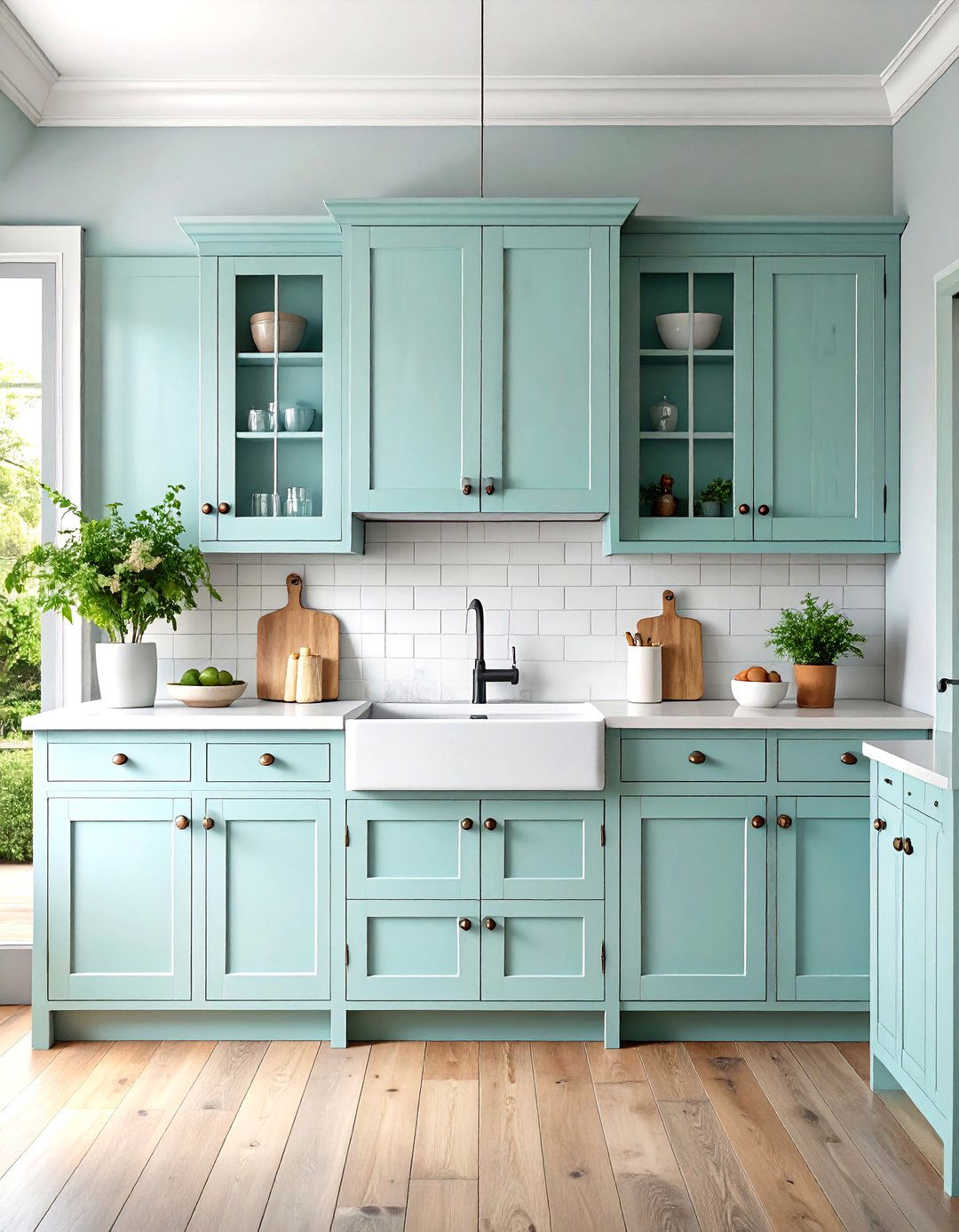
Open shelving crafted from reclaimed wood showcases antique dishes and glassware, adding both storage and character to a shabby chic kitchen. By leaving shelves unadorned by cabinet doors, the eye is drawn to curated collections of mismatched china, copper pots, and embroidered linens, reinforcing the eclectic aesthetic. To maintain cohesion, shelves are often painted in the same pale tones as cabinetry, then lightly sanded to echo the distressed theme. Brackets in wrought iron or brushed brass support the shelves, introducing subtle industrial or metallic accents that contrast beautifully with soft wooden textures.
3. Pastel Color Palette
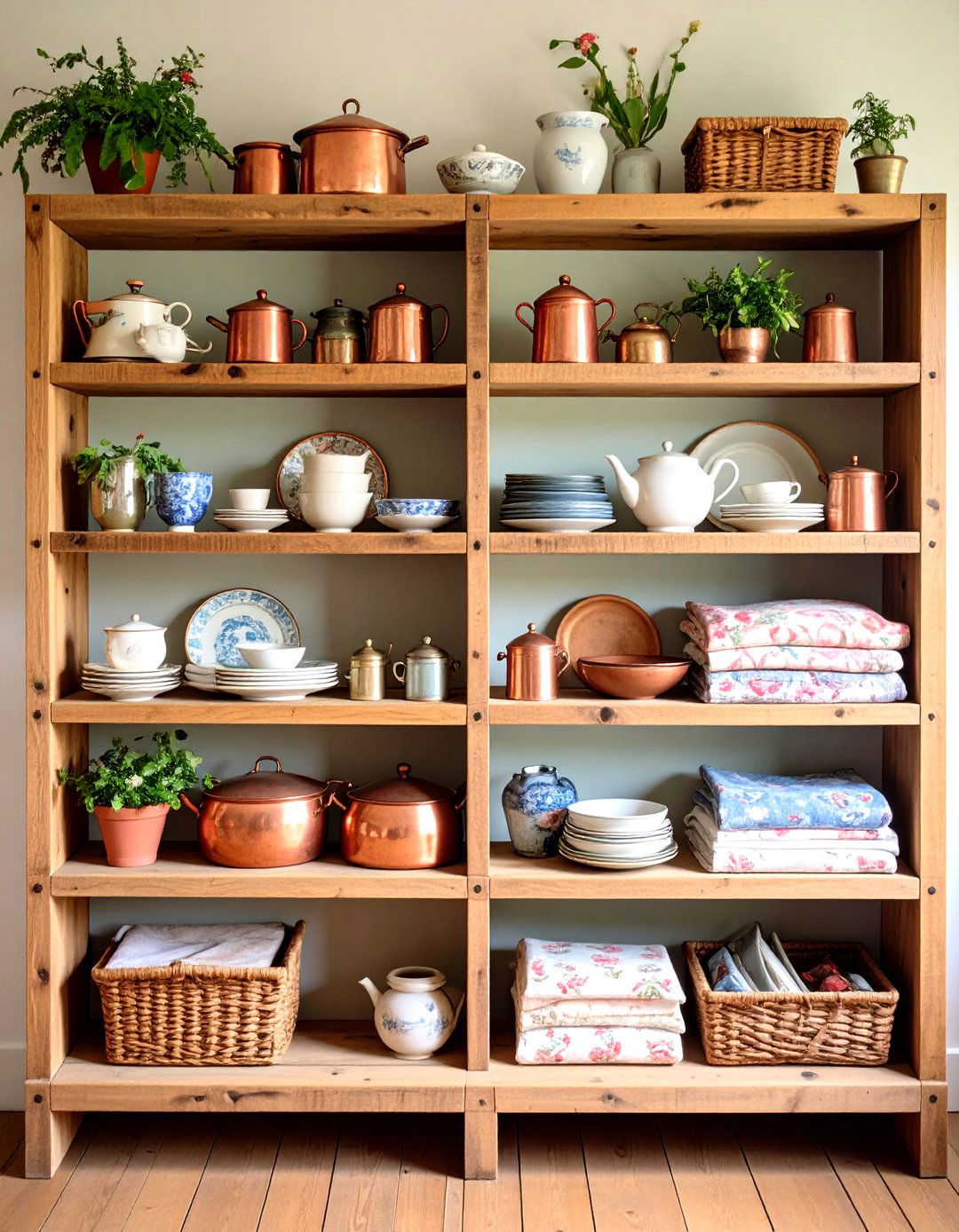
Soft pastels—like mint green, powder blue, and buttery yellow—define the shabby chic color palette, evoking a serene, vintage-inspired mood. These hues pair effortlessly with whitewashed walls and weathered wood, amplifying natural light and creating an airy feel. For balance, darker accents such as charcoal hardware or deep-toned countertops can ground the space without disrupting its lighthearted charm. Wall shelves and open cupboards painted in complementary pastel shades allow homeowners to introduce variety while maintaining a cohesive look.
4. Farmhouse Sink
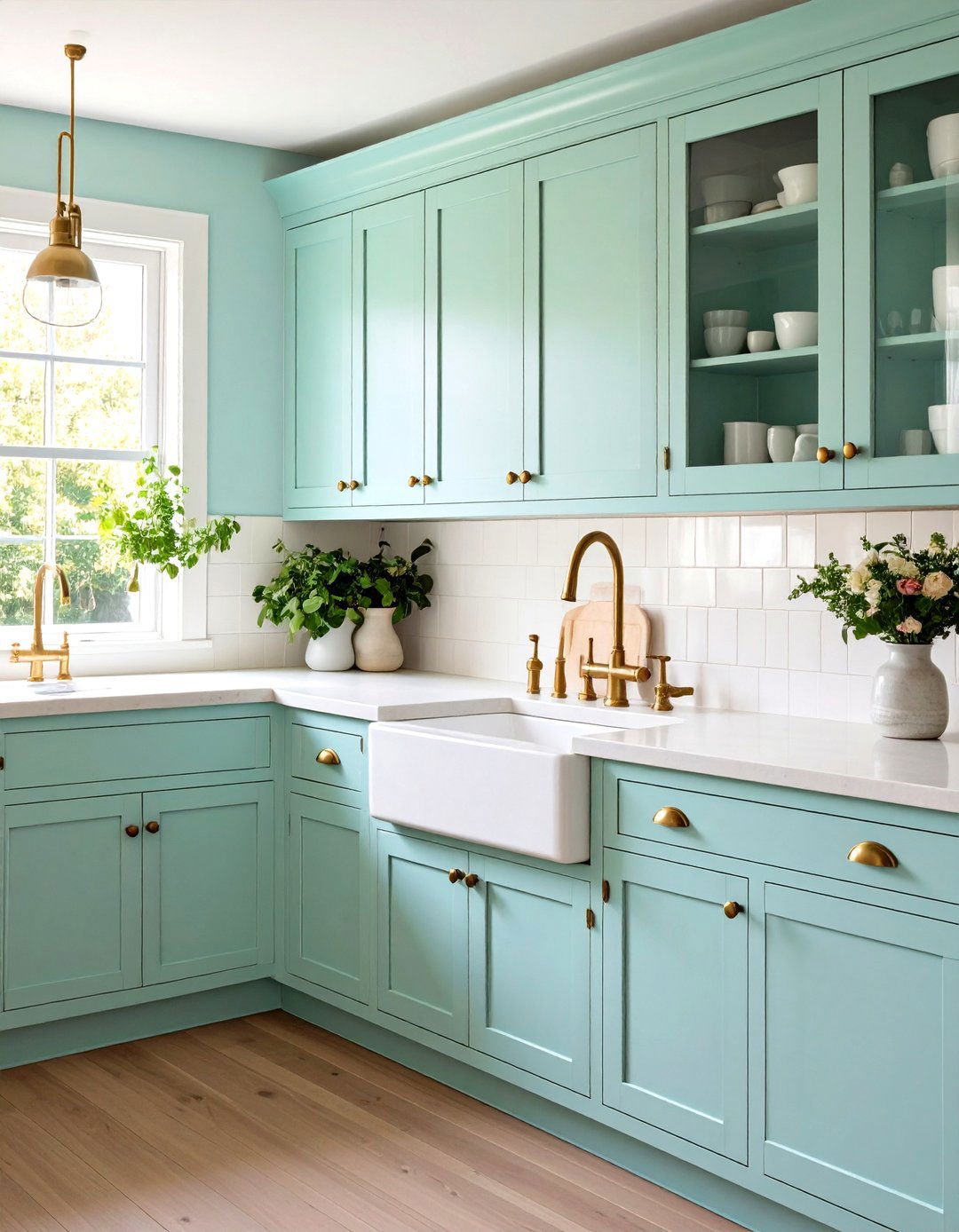
A classic apron-front farmhouse sink lends authenticity to shabby chic kitchens, offering a spacious basin ideal for large pots and rustic entertaining. Often crafted from porcelain or fireclay, these sinks reinforce the vintage vibe while ensuring modern durability and ease of cleaning. Pairing the sink with turn-of-the-century style faucets in brushed brass or oil-rubbed bronze enhances the overall nostalgic aesthetic. To highlight this focal point, backsplashes of patterned tiles or beadboard paneling frame the sink area, adding texture and visual interest.
5. Mason Jar Storage
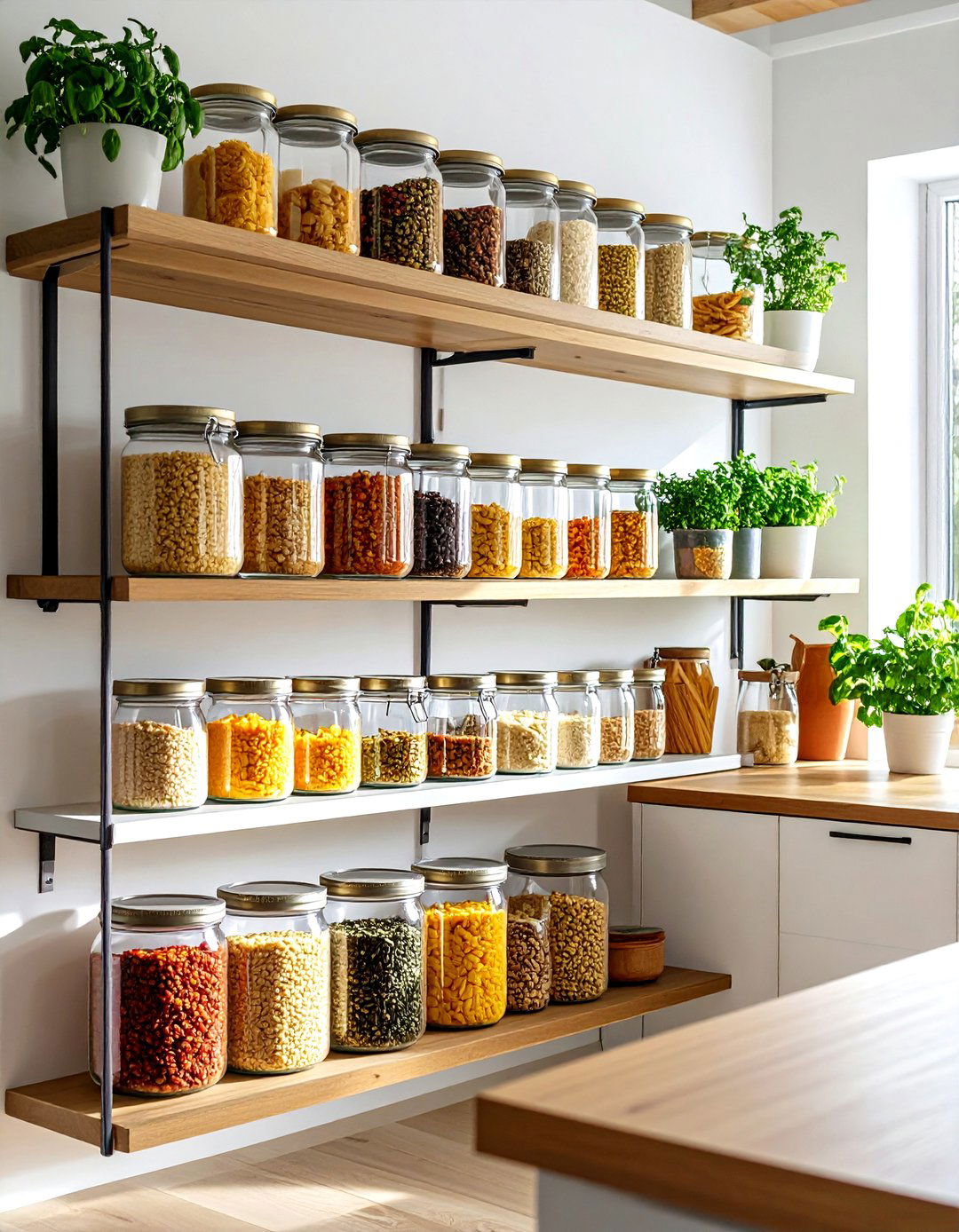
Mason jars repurposed as storage containers—mounted on shelves or hung from hooks—combine practicality with shabby chic charm. They corral dry goods like pasta, grains, and spices in clear, uniform vessels that reveal contents at a glance. For an added decorative touch, lids can be painted in pastel hues or distressed to match surrounding cabinets. Arranged in neat rows or staggered clusters, these jars lend a quaint apothecary feel and encourage organized, accessible storage.
6. Floral Wallpaper
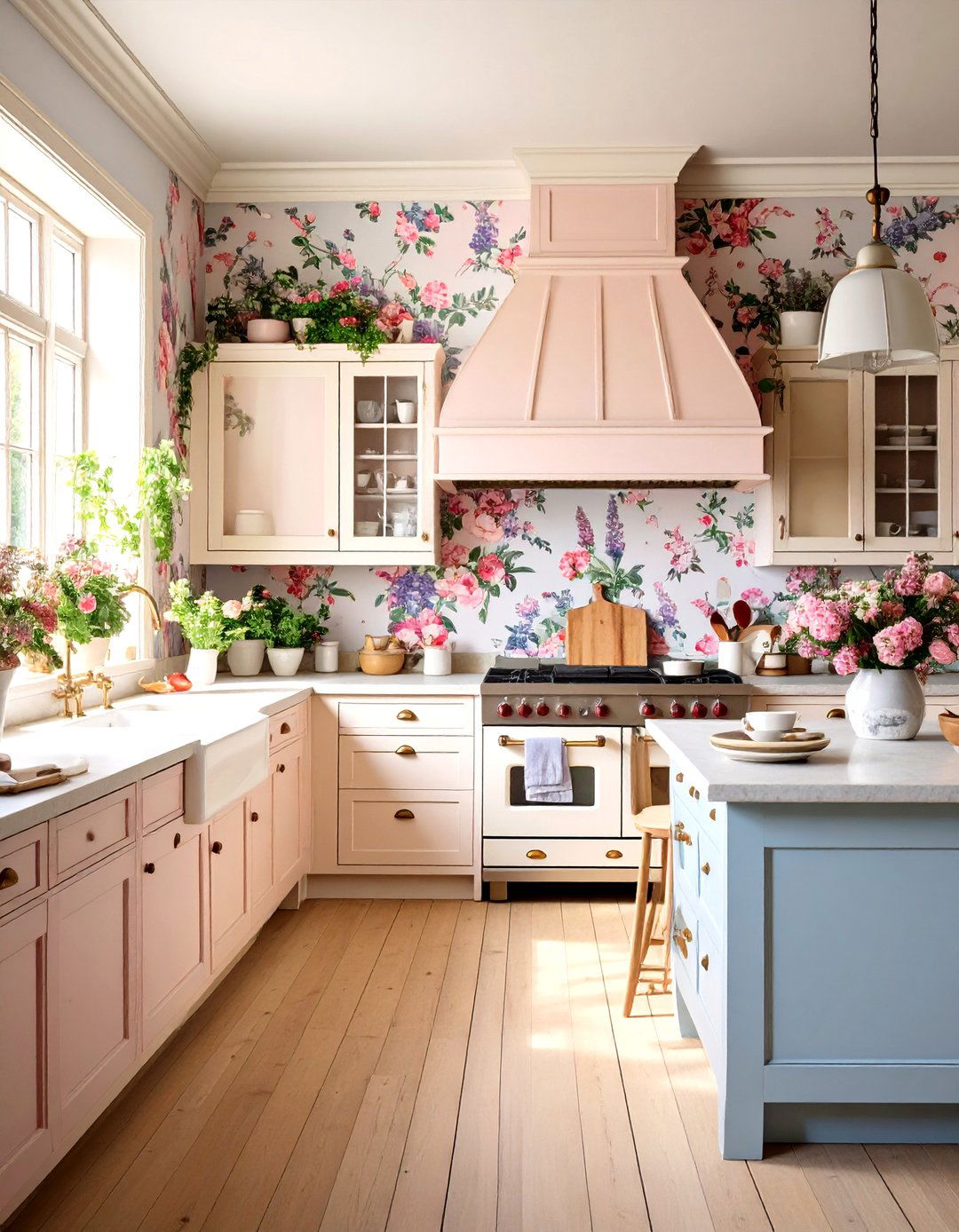
Delicate floral wallpapers introduce a soft, romantic backdrop, often adorning one accent wall or the interior of glass-front cabinets. Traditional nib designs in muted rose, lavender, or sage green complement the pastel palette, reinforcing cottage-core aesthetics. When applied behind open shelves, the wallpaper peeks through displayed items, adding layers of pattern and color. To keep the space from feeling busy, designers balance these prints with solid cabinetry and simple stone countertops.
7. Reclaimed Wood Countertops
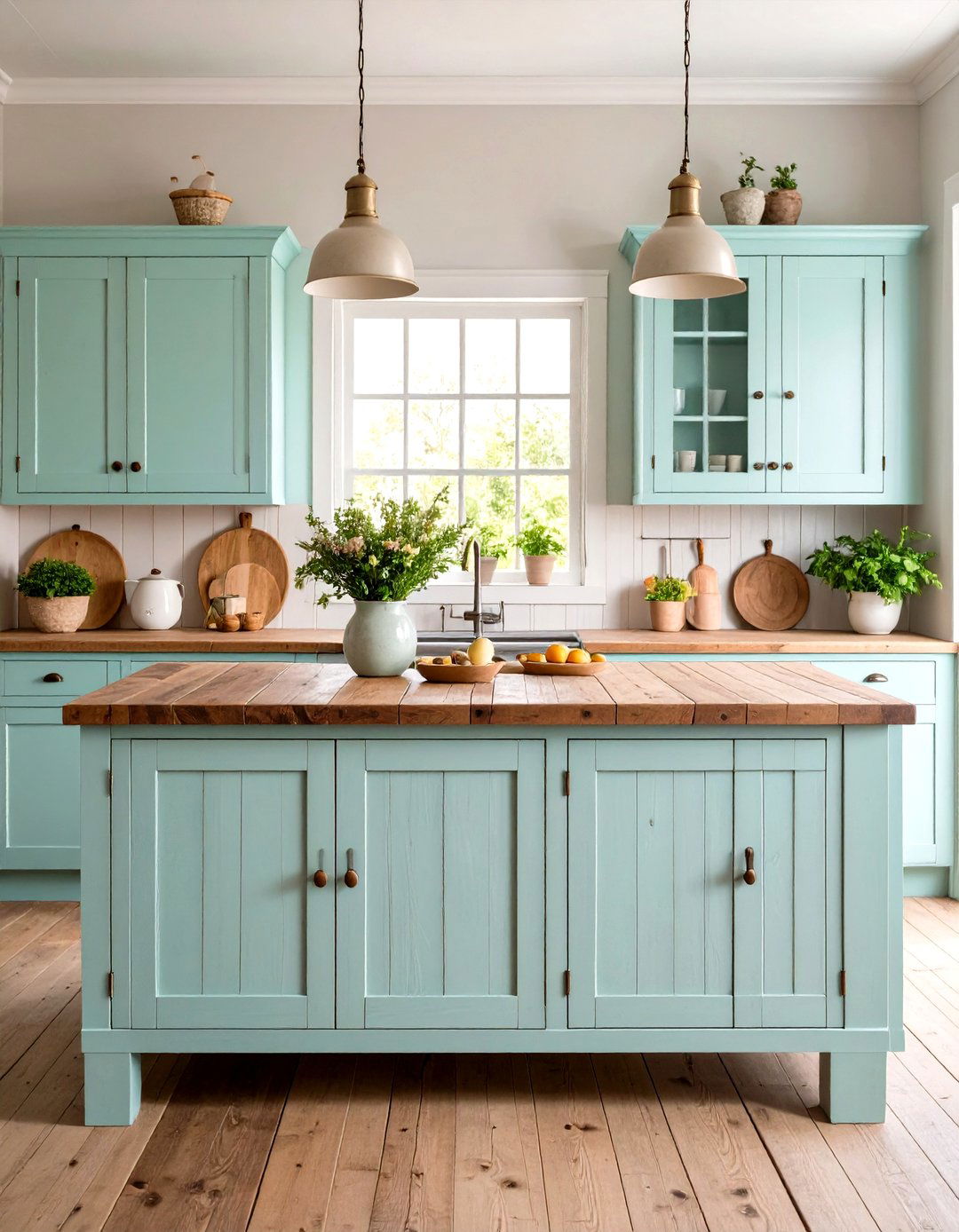
Reclaimed wood countertops lend warmth and history, their knots and grain variations telling stories of past use. Often finished with food-safe oils or sealants, these surfaces withstand daily wear while maintaining natural patina. Contrasting wood tones—such as oak or pine—against white or pastel cabinetry emphasizes textural depth. To protect against moisture, designers recommend integrated troughs or raised backsplash edges, marrying form and function seamlessly.
8. Antique Hardware
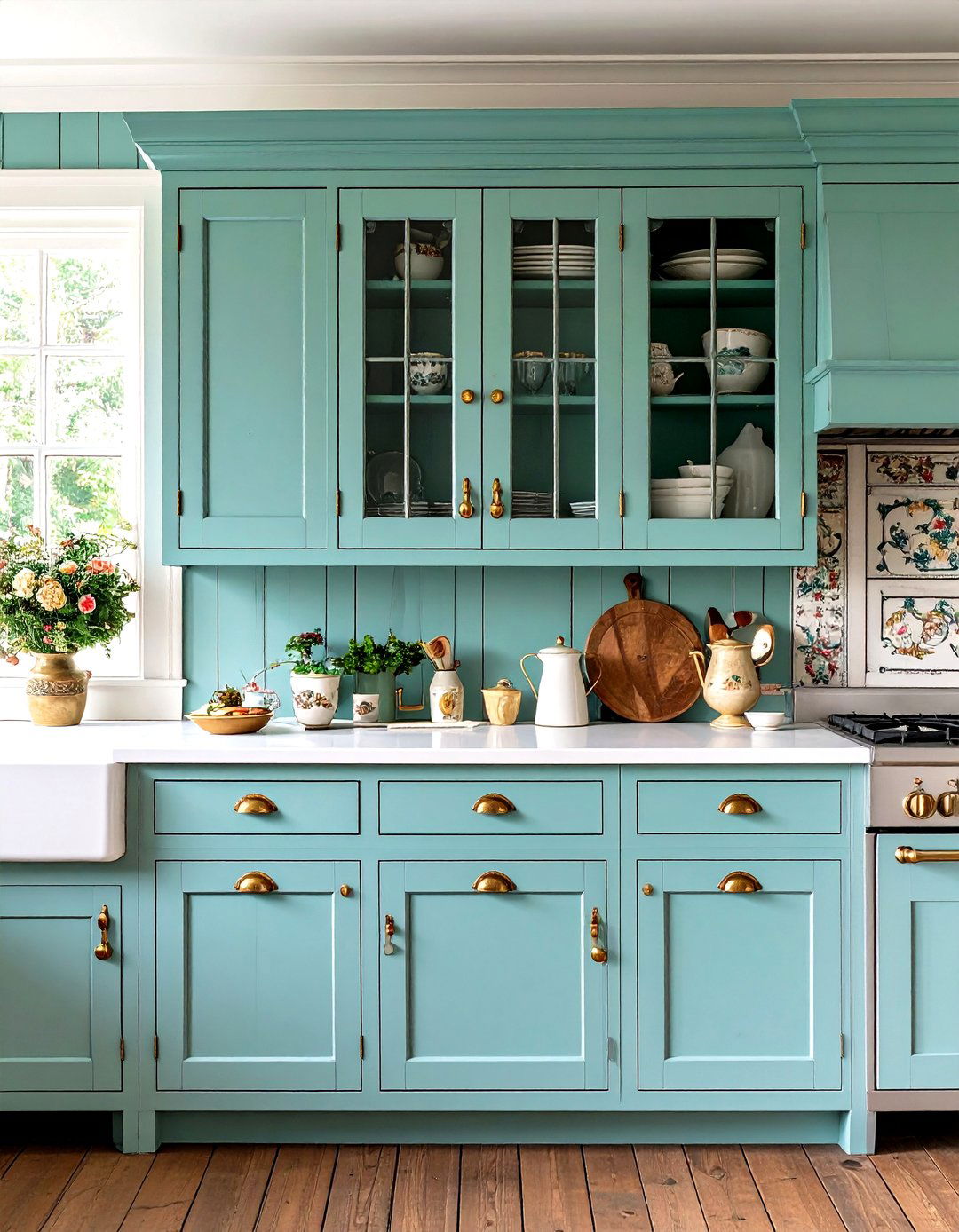
Swapping standard knobs and pulls for antique brass, porcelain, or crystal hardware instantly elevates cabinet doors with vintage flair. These small accents serve as tactile details, their worn finishes and ornate shapes contrasting with simpler surfaces. Mixing different but complementary hardware styles—such as pairing a delicate porcelain knob with a robust brass pull—adds personality and depth. Hardware placement at eye-level door fronts ensures these decorative elements stand out without overwhelming the overall design.
9. Shiplap Walls
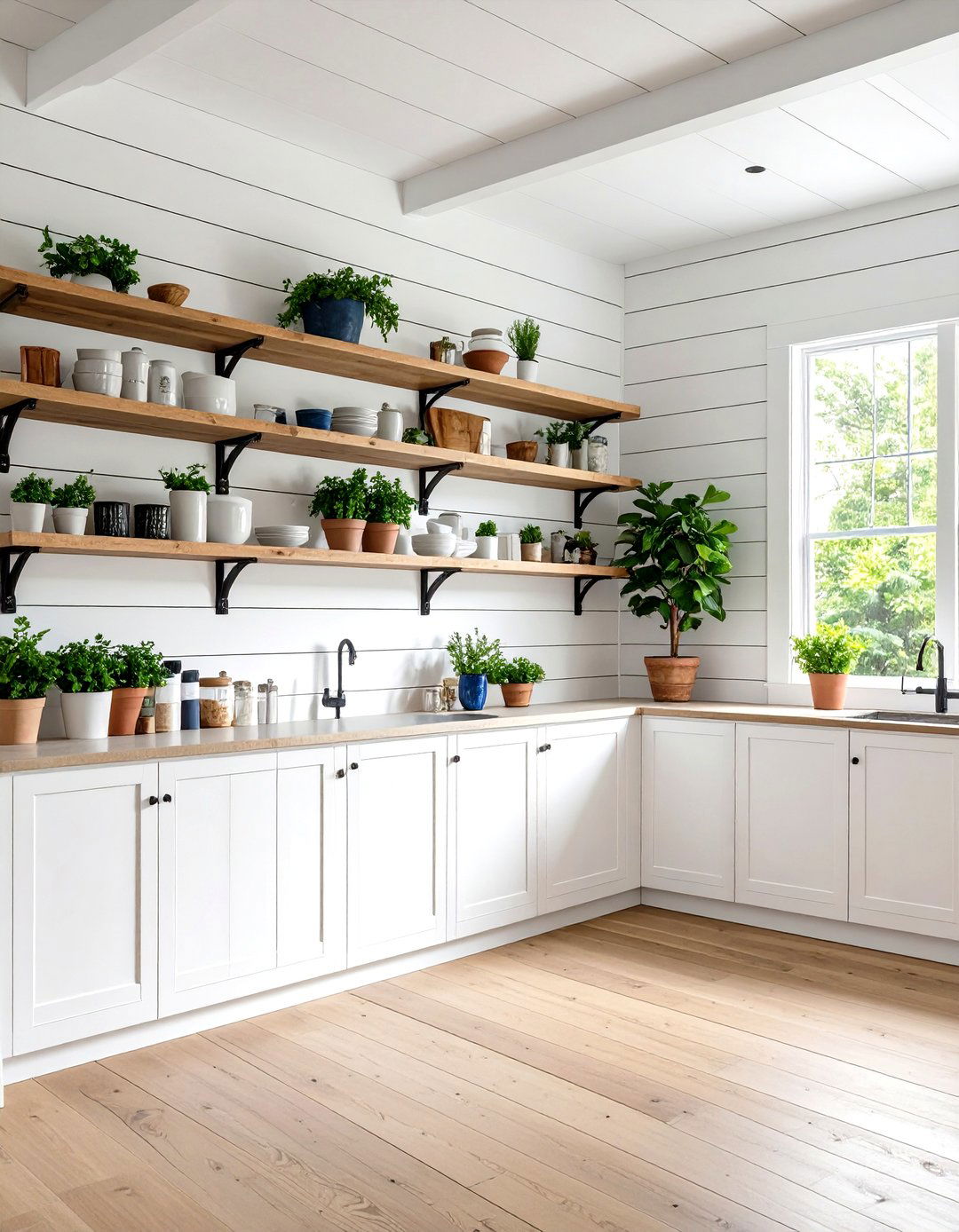
Horizontal shiplap wall paneling painted in white or soft pastels introduces subtle texture reminiscent of rustic cottages. Panels can cover entire walls or serve as a backsplash alternative, creating a clean yet tactile surface. The grooves between boards cast gentle shadows, enhancing visual interest without contrasting harshly with other elements. Shiplap pairs beautifully with open shelving and vintage wall hooks for hanging utensils, reinforcing the lived-in, cozy ambiance.
10. Worn-In Accessories
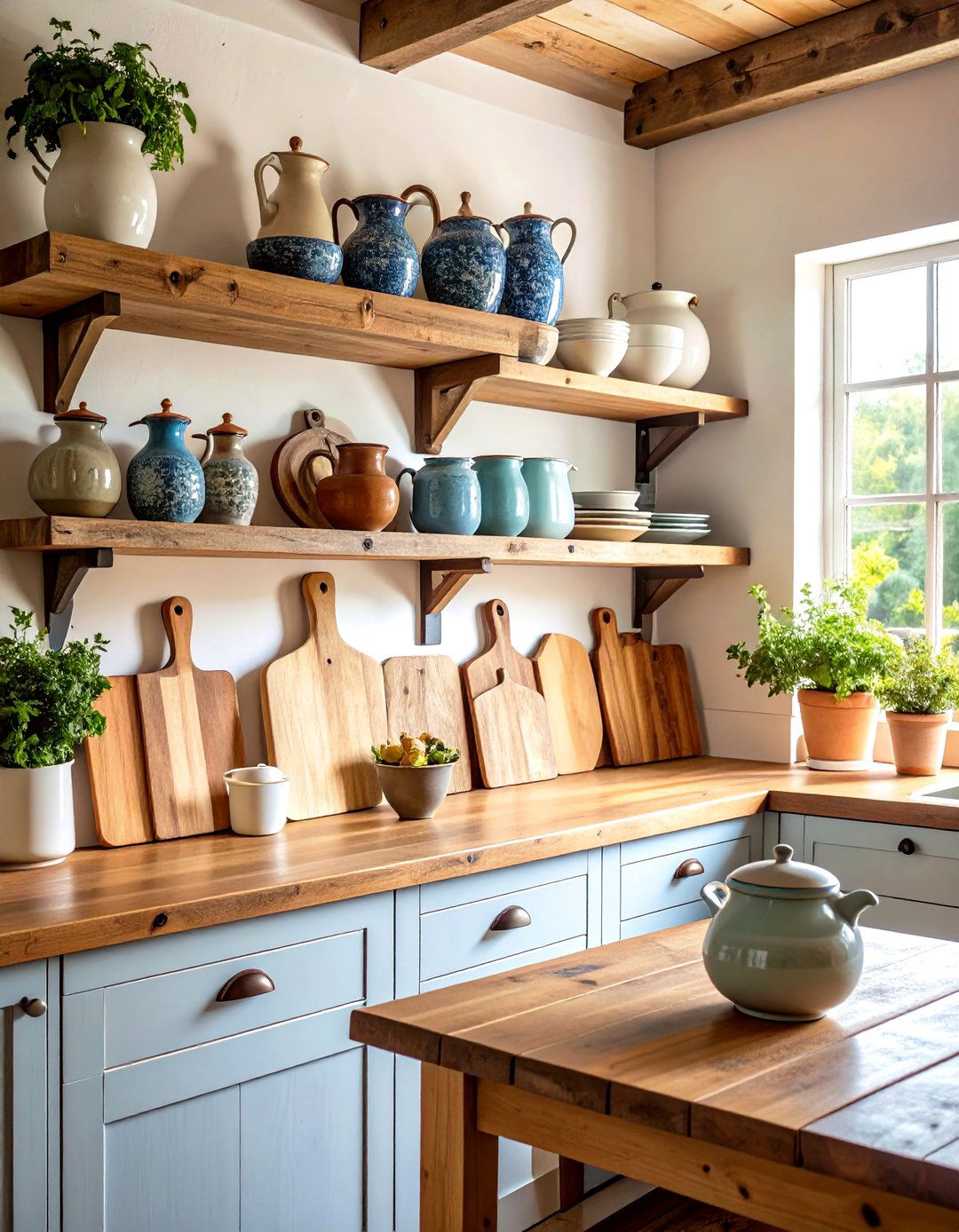
Carefully curated accessories—like chipped ceramic pitchers, weathered cutting boards, and faded linen tea towels—contribute to the sense of accumulated history. These pieces, often found at flea markets or family heirlooms, lend authenticity and warmth. Grouping items by color or texture—for instance, white pottery on a pastel shelf—creates cohesive vignettes that feel deliberate yet casual. Rotating seasonal decor, such as dried lavender bundles or holiday-themed linens, keeps the space feeling fresh while honoring its vintage roots.
11. Chalk Paint Finishes
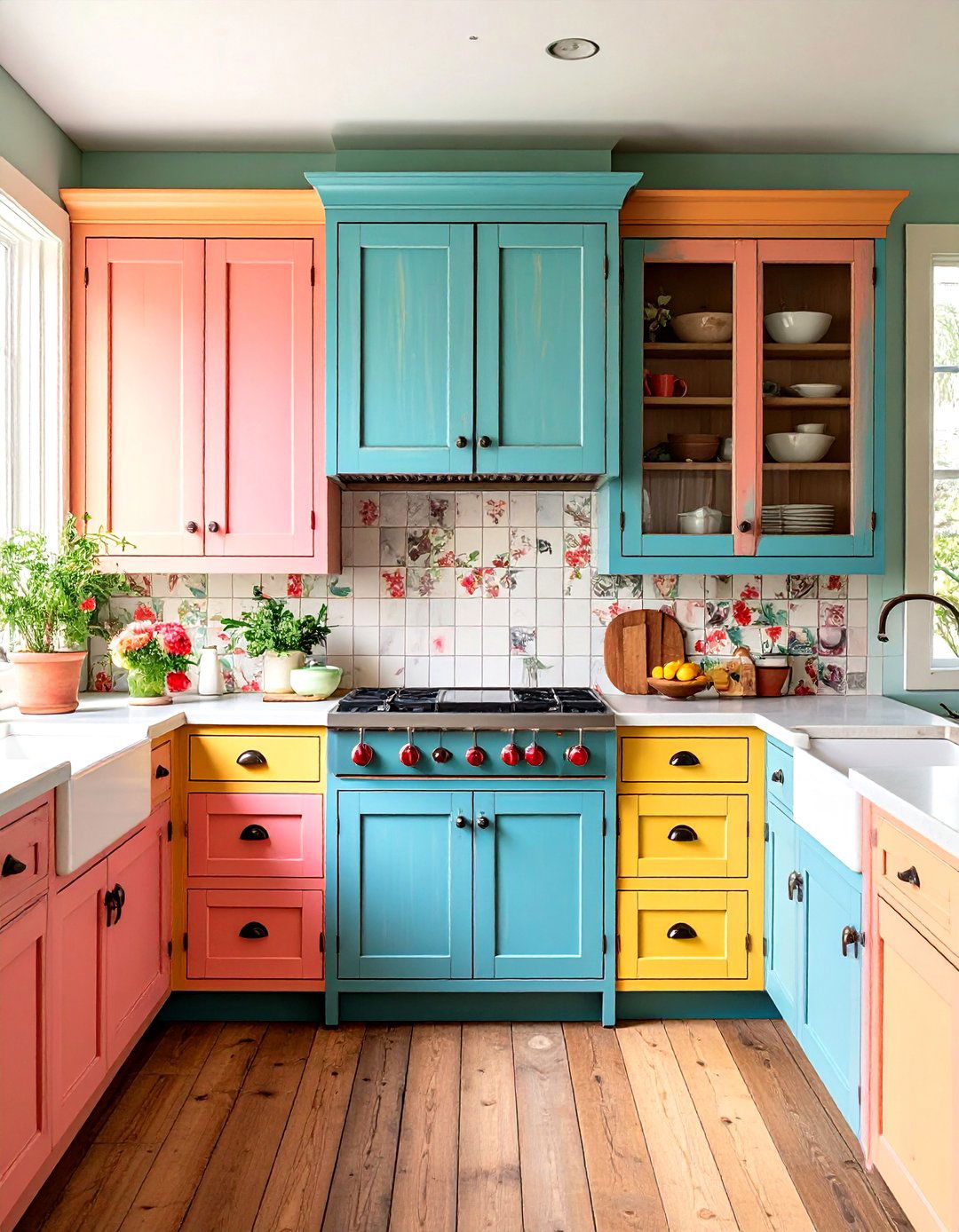
Chalk paint—known for its matte, velvety finish—allows for easy distressing and layer effects without extensive prep work. Brands like Annie Sloan have popularized chalk paint for furniture and built-ins, enabling DIY transformations of plain cabinets into shabby chic statements. Layering two contrasting chalk paint colors and sanding through the top layer achieves depth and dimension in cabinet doors. Sealing with a clear wax protects surfaces while preserving the characteristic muted sheen.
12. Lace Curtains
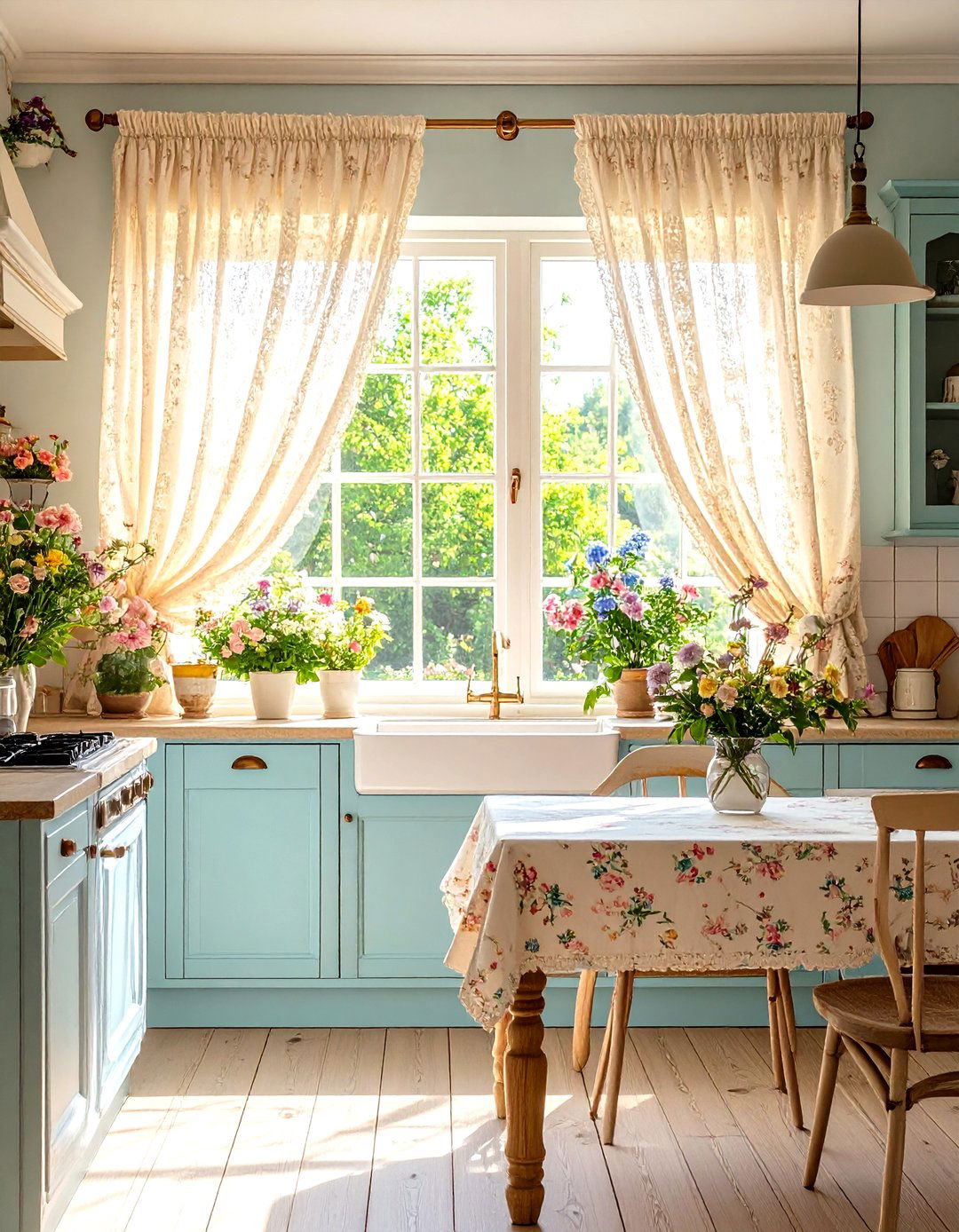
Lightweight lace curtains soften windows and allow gentle light diffusion, reinforcing the romantic cottage atmosphere. Patterns range from dainty florals to geometric motifs, each adding subtle pattern without competing with other decor. For kitchens with higher humidity, polyester lace options offer easy care and durability. Mounting curtains on simple wrought iron rods or vintage brass fixtures keeps focus on the delicate fabric rather than hardware.
13. Industrial Lighting
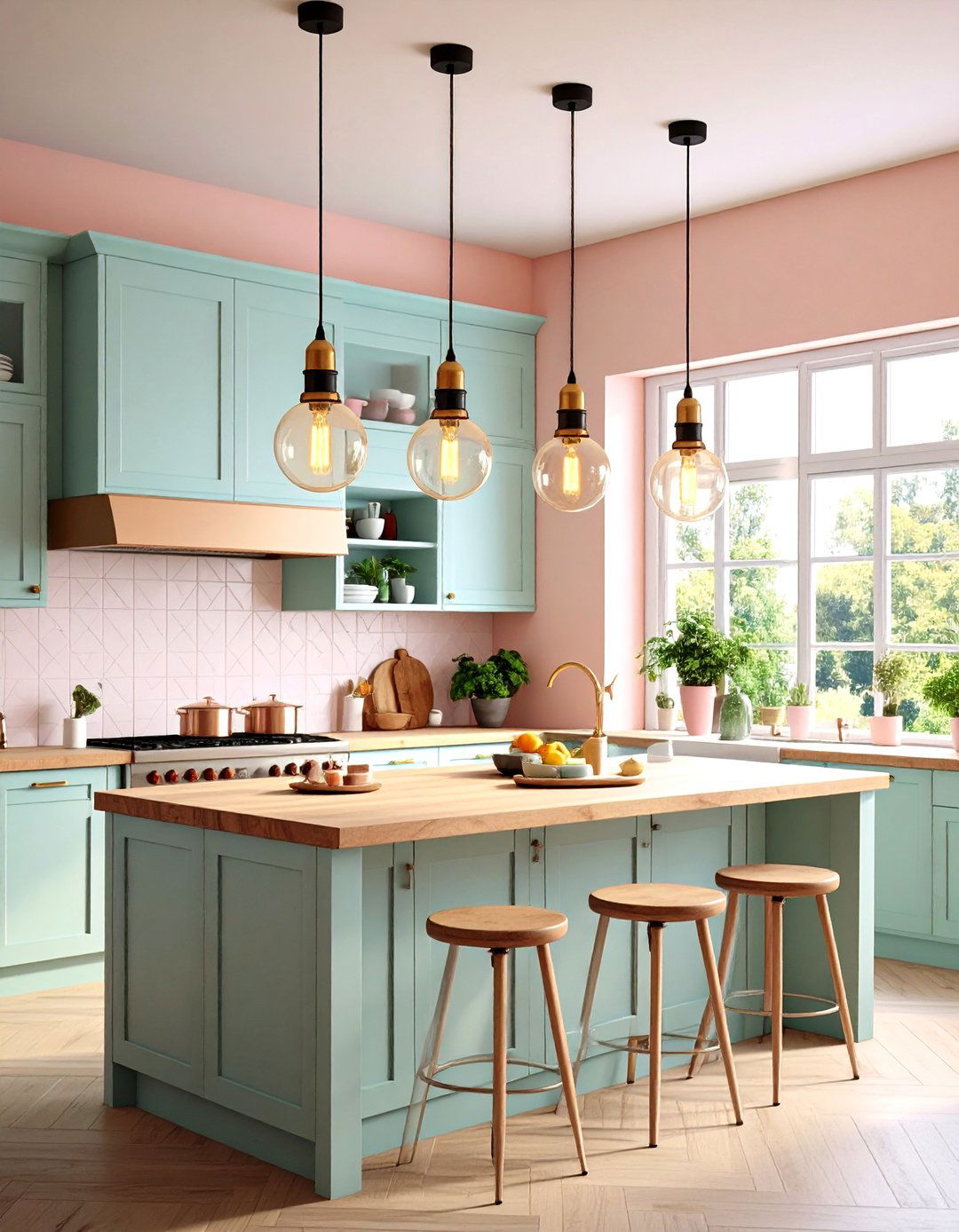
Contrasting the softness of shabby chic, industrial-style lighting—such as metal pendant lamps or exposed-bulb sconces—adds an edge and modern functionality. Matte black or aged brass finishes blend with pastel and white palettes, while Edison bulbs emit warm, inviting glows. Fixtures hung over kitchen islands or sinks become focal points, balancing rustic elements with streamlined silhouettes. Adjustable arms or swivel shades allow for task lighting flexibility in work areas.
14. Patterned Tile Backsplash
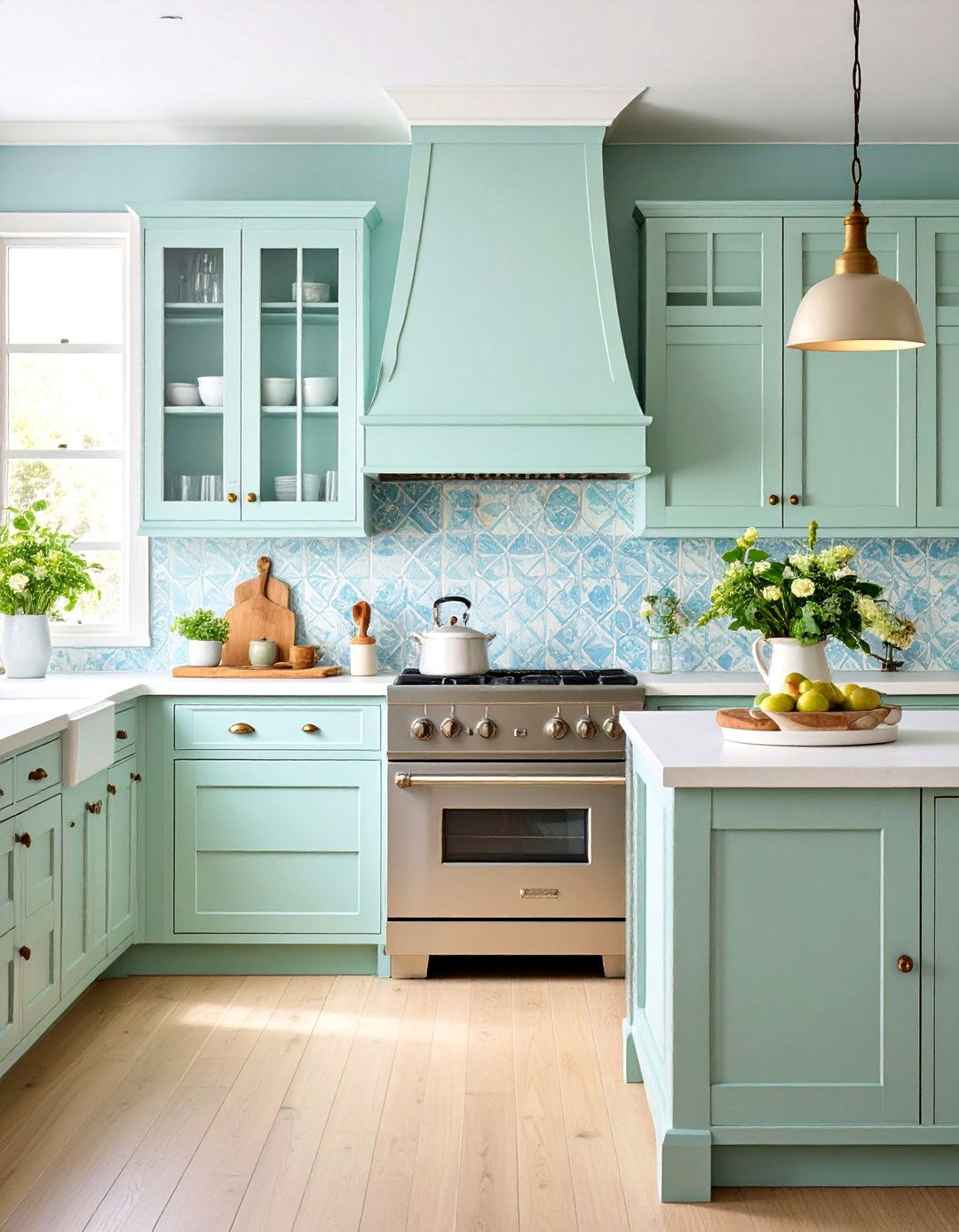
Patterned encaustic or hand-painted tiles behind counters introduce color and graphic interest, often featuring floral or geometric motifs. Tiles in soft blues, greens, and blush tones harmonize with the overall pastel scheme, while intricate patterns draw the eye without overwhelming. To blend with distressed cabinetry, grout is often chosen in neutral or slightly warm hues, preventing stark contrasts. For an authentic look, source reclaimed or reproduction Victorian-style tiles.
15. Mix & Match Textiles

Layering textiles—such as striped kitchen towels, floral chair cushions, and gingham table runners—brings pattern variety and cozy softness. Designers recommend sticking to a cohesive color palette so different prints complement rather than clash. Natural fibers like linen and cotton provide breathability and ease of care in a working kitchen. Small-scale patterns balance larger prints, ensuring visual harmony across chair seats, window treatments, and barstool cushions.
16. Copper Accents
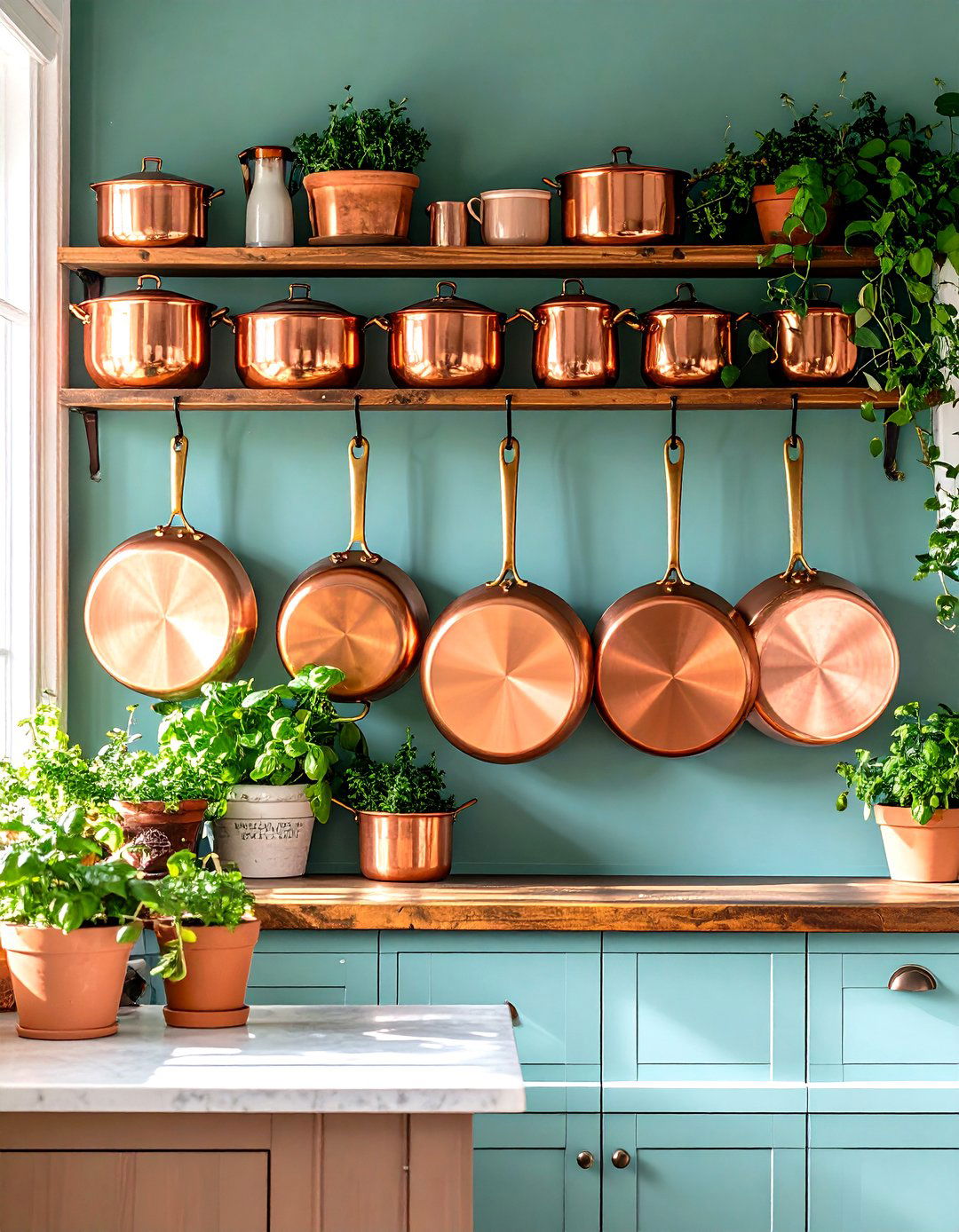
Copper pots, pans, and utensil holders add warmth and metallic sheen, patinating over time to deepen the vintage feel. Hanging copper cookware on wall racks or open shelving serves both decorative and practical purposes. Small accent pieces—like copper candle holders or spice canisters—tie the theme together without dominating the palette. Polished copper balances pastel hues and distressed textures, bridging the gap between rustic and refined.
17. Glass-Front Cabinets
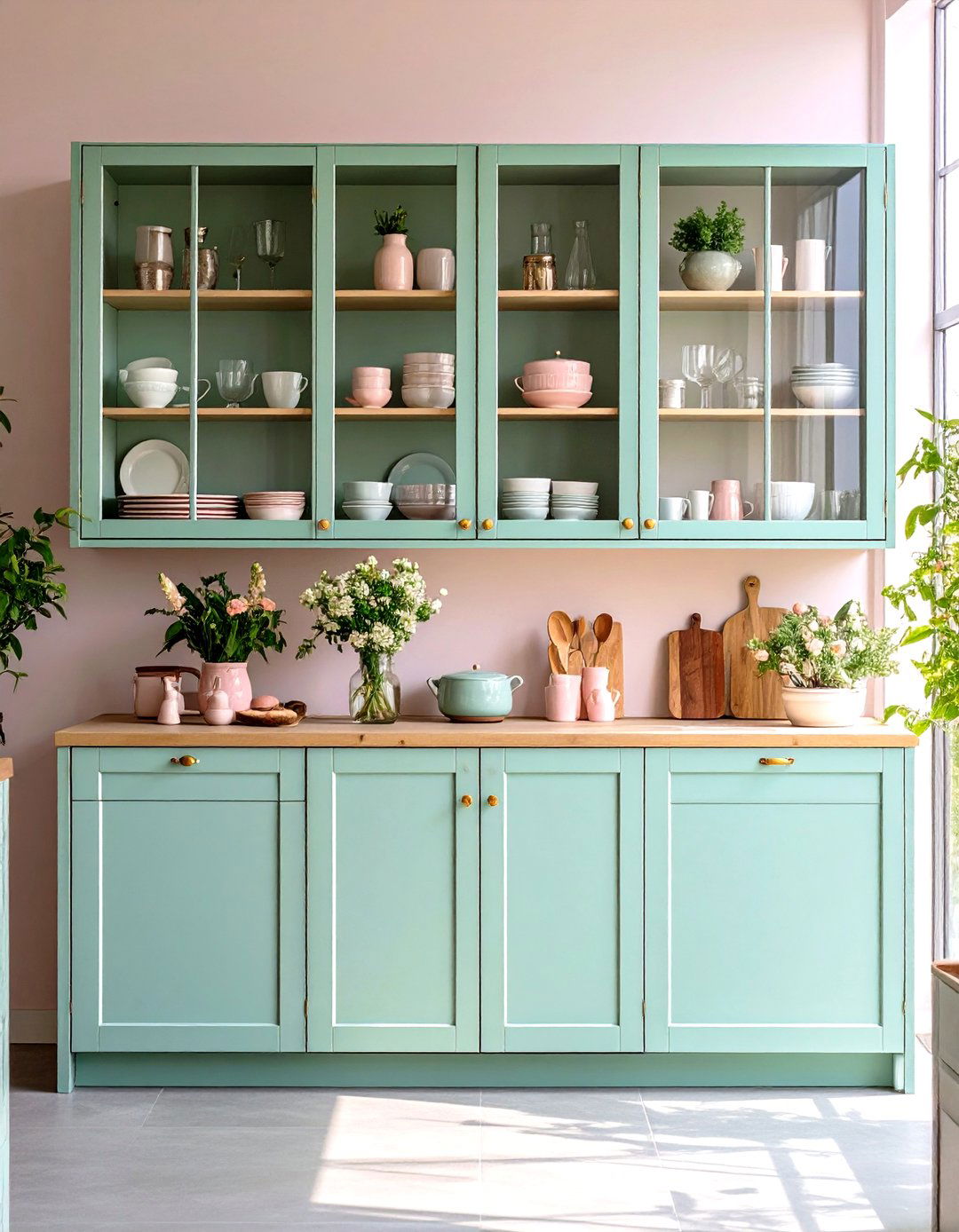
Glass-front cabinet doors showcase curated dishware and decorative pieces, enhancing the open, airy feel of shabby chic kitchens. To maintain visual cohesion, cabinet interiors are often painted in the same pastel shades or lined with the same floral wallpaper used elsewhere. Lighting installed inside cabinets highlights treasured collections and creates gentle, display-like illumination. Frosted or seeded glass options add texture and soften the view, revealing shapes without exposing every detail.
18. Rustic Floating Shelves
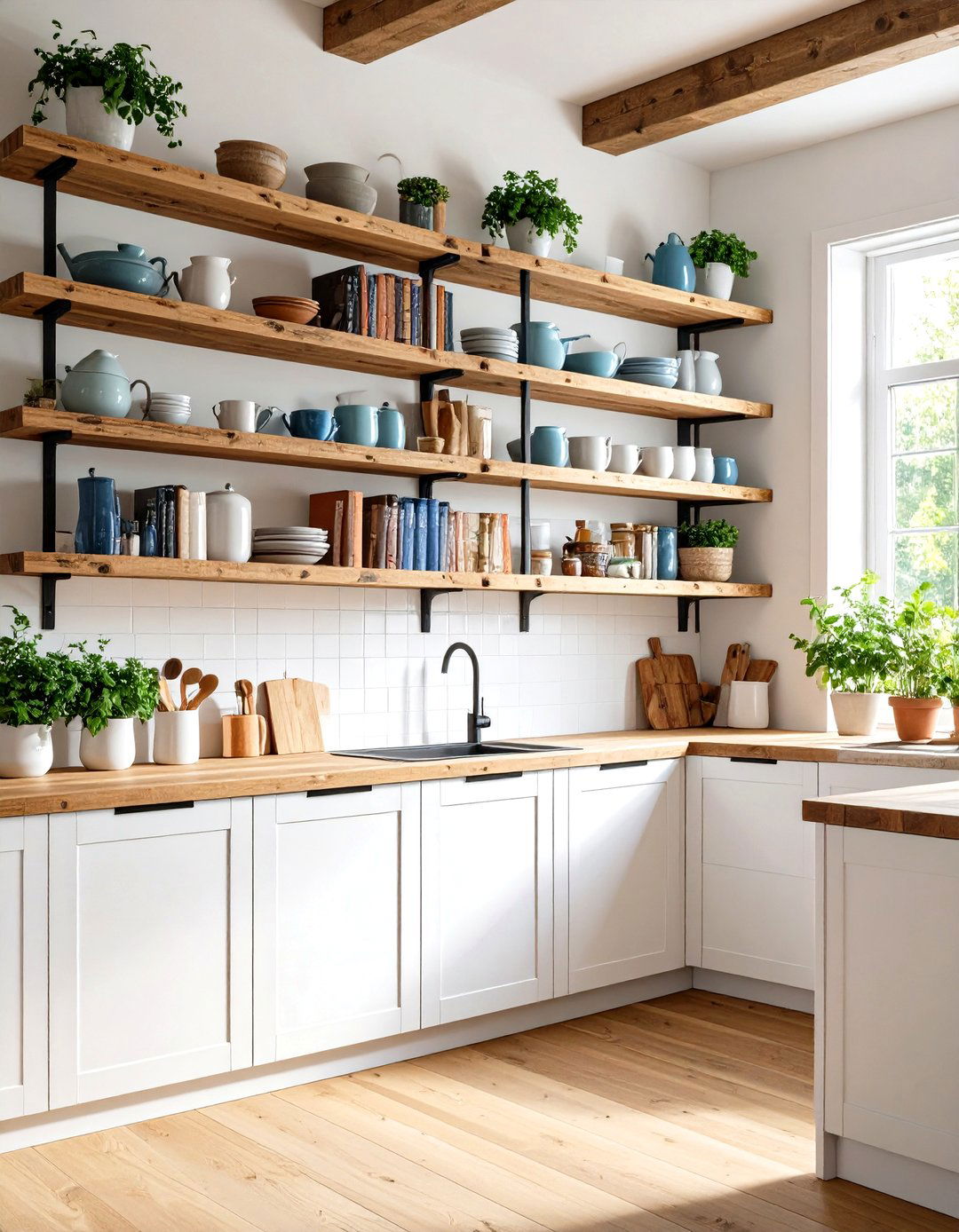
Floating shelves made from reclaimed wood or distressed planks offer streamlined display space, free from visible brackets. These shelves complement open shelving concepts while providing a cleaner, more modern silhouette. Grouping items in clusters—such as cookbooks, potted herbs, and ceramic pitchers—creates layered vignettes that feel both styled and lived-in. Dark metal floating anchors add subtle contrast and ensure sturdy support.
19. French Provincial Details

Curved lines, cabriole legs on kitchen islands, and ornate moldings evoke the elegance of French provincial furniture, adapted for kitchen use. Hand-carved corbels under countertops and decorative appliqués on cabinet doors infuse a romantic, Old World charm. Pairing these features with distressed paint and pastel glazing techniques balances formality with casual comfort. Soft medallion motifs on tiles or stenciled along walls further reinforce the provincial aesthetic.
20. Repurposed Furniture
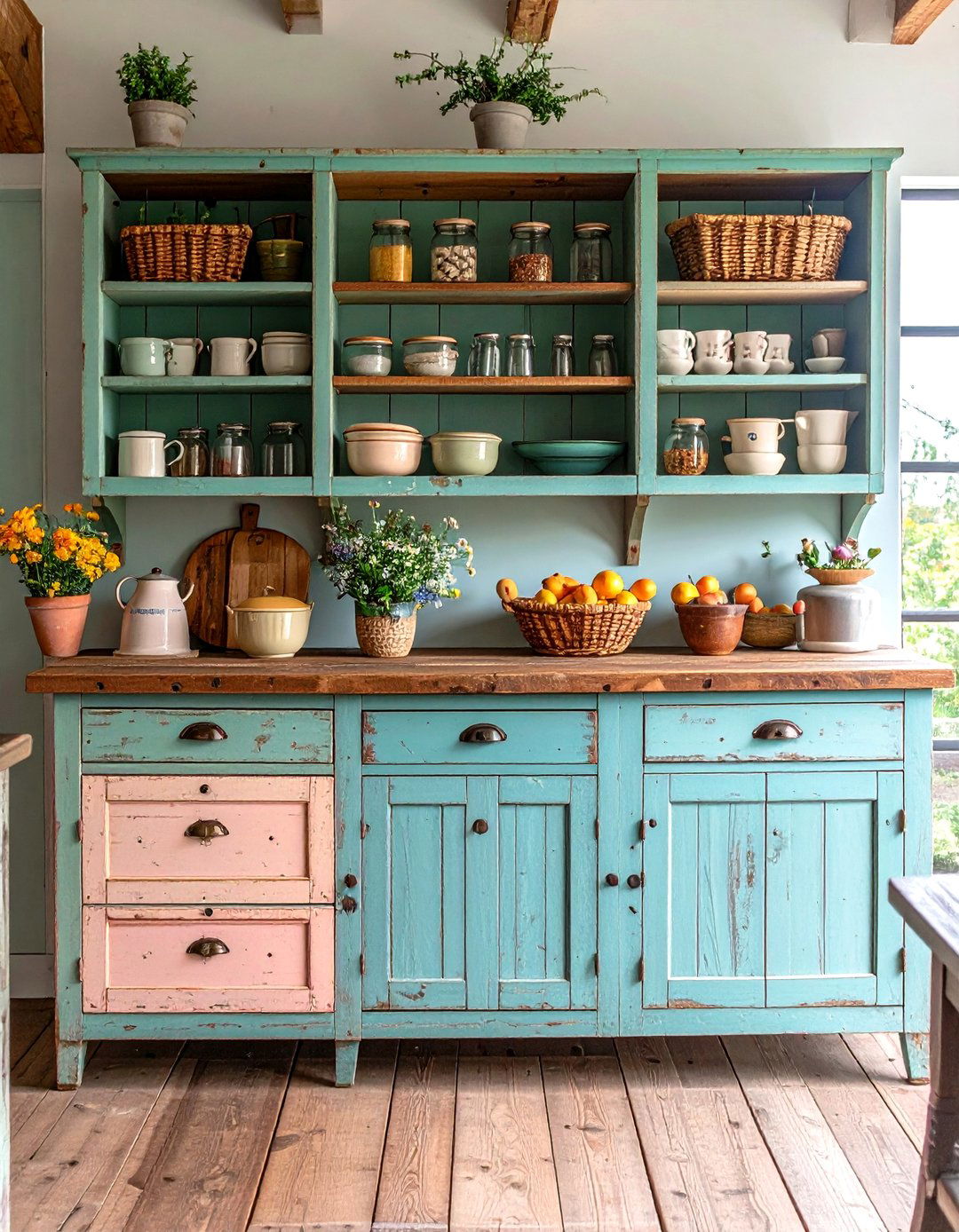
Incorporating vintage sideboards, dressers, or tables as kitchen islands or storage units adds unique personality and functionality. These pieces, often painted or lightly distressed, bring unexpected scale and visual interest. Upcycling items like old ladders into towel racks or utilizing antique crates for produce storage deepens the sense of history. Before placing repurposed furniture in kitchens, it’s essential to seal surfaces for moisture resistance and easy cleaning.
Conclusion:
Shabby chic kitchens celebrate the beauty of imperfection, marrying antique-inspired elements with functional modern design. Through distressed finishes, soft pastel palettes, and carefully curated vintage accessories, each kitchen becomes a warm, inviting haven that tells a story. Embracing features like open shelving, farmhouse sinks, and repurposed furniture ensures a timeless aesthetic that feels both elegant and cozy. Ultimately, the charm of shabby chic lies in its balance of romantic nostalgia and everyday practicality, creating a space where every scratch and patina adds to its enduring appeal.



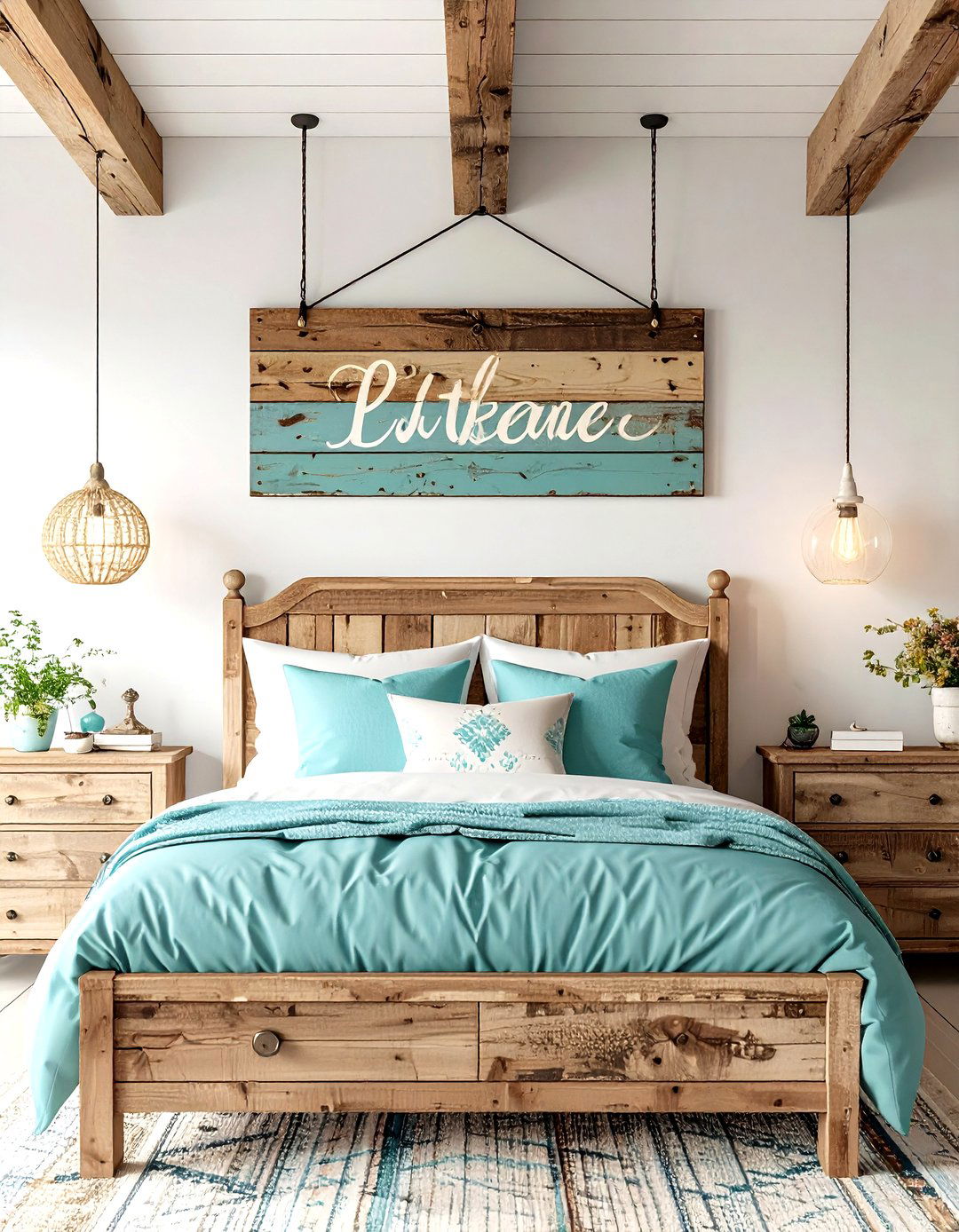
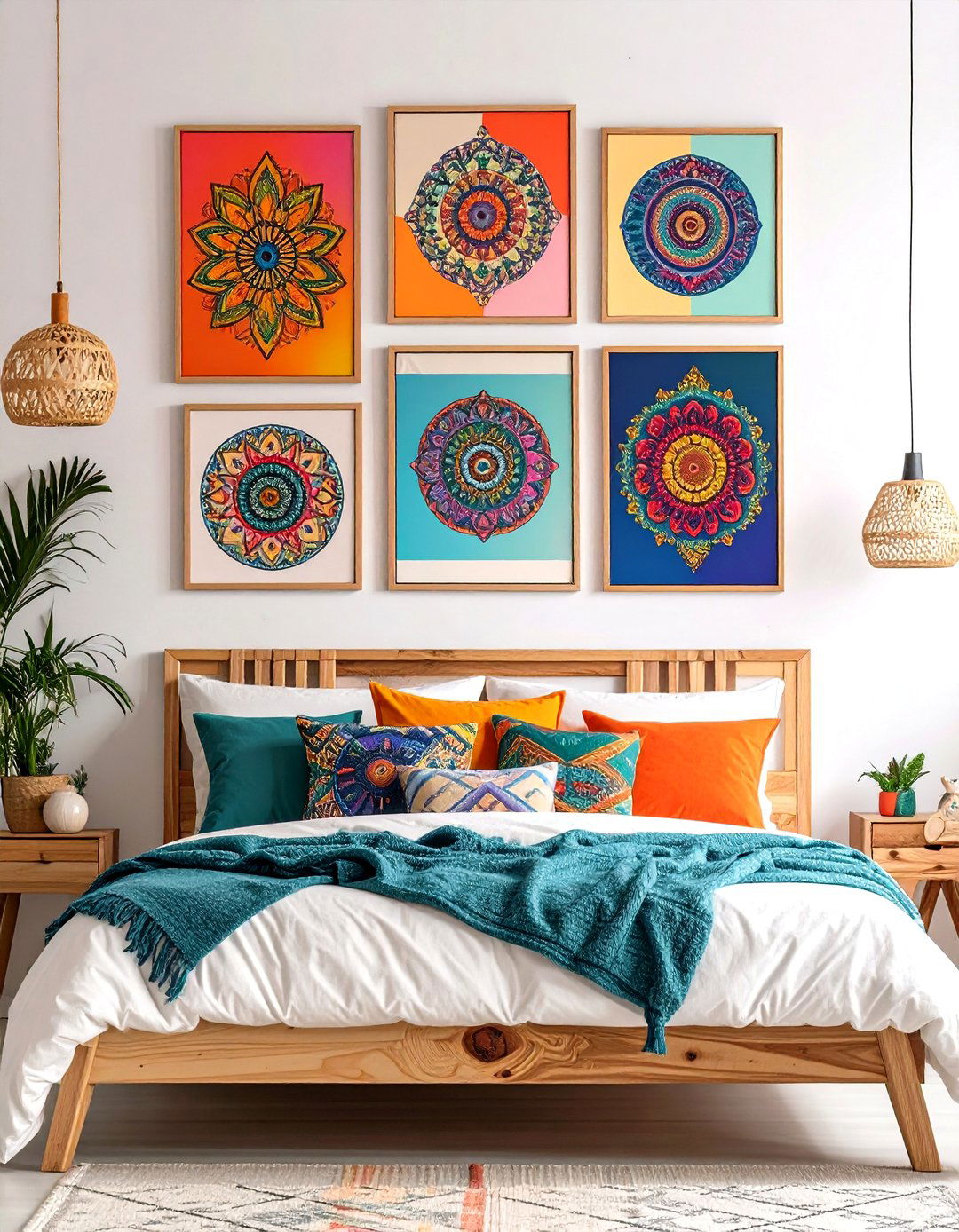
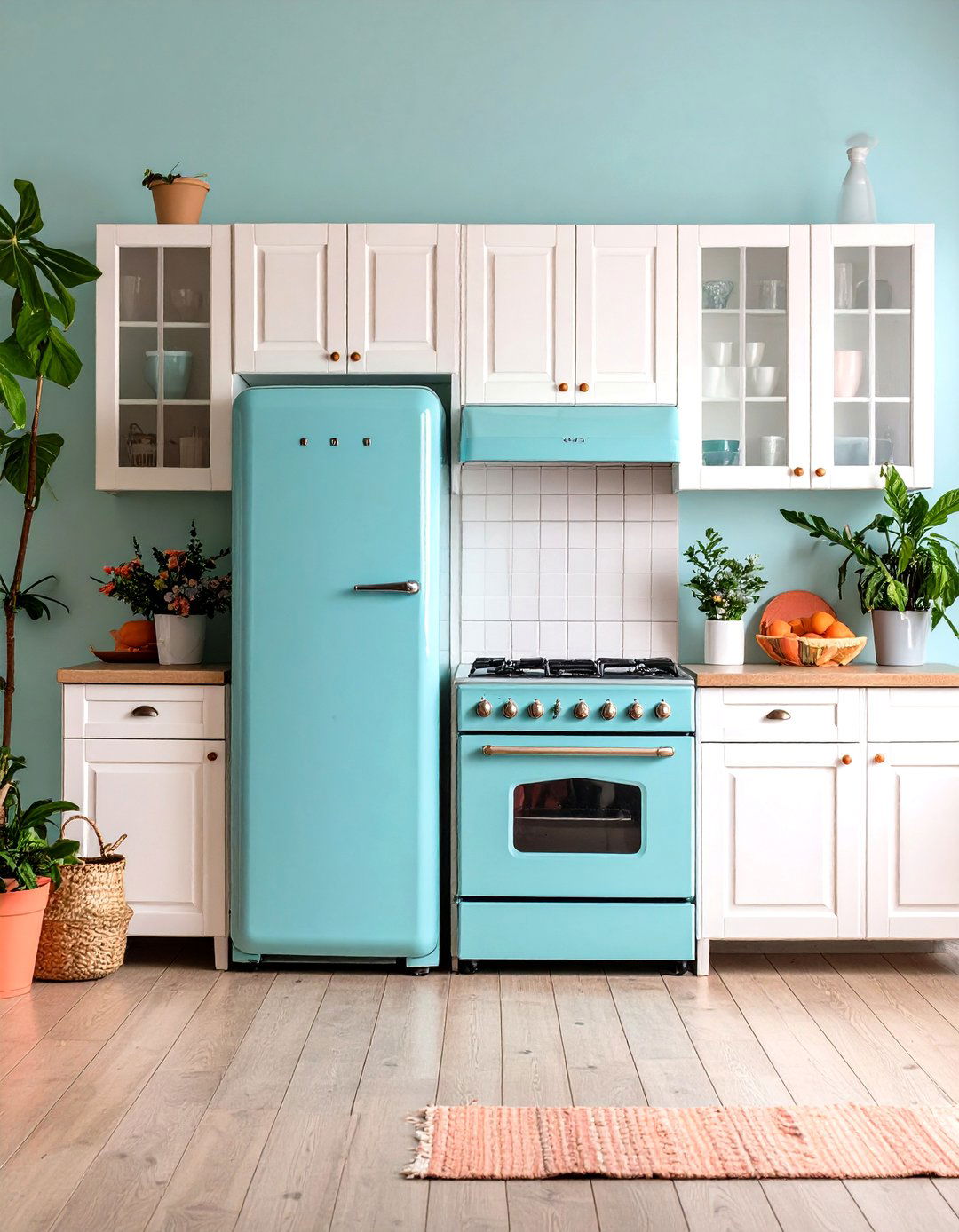

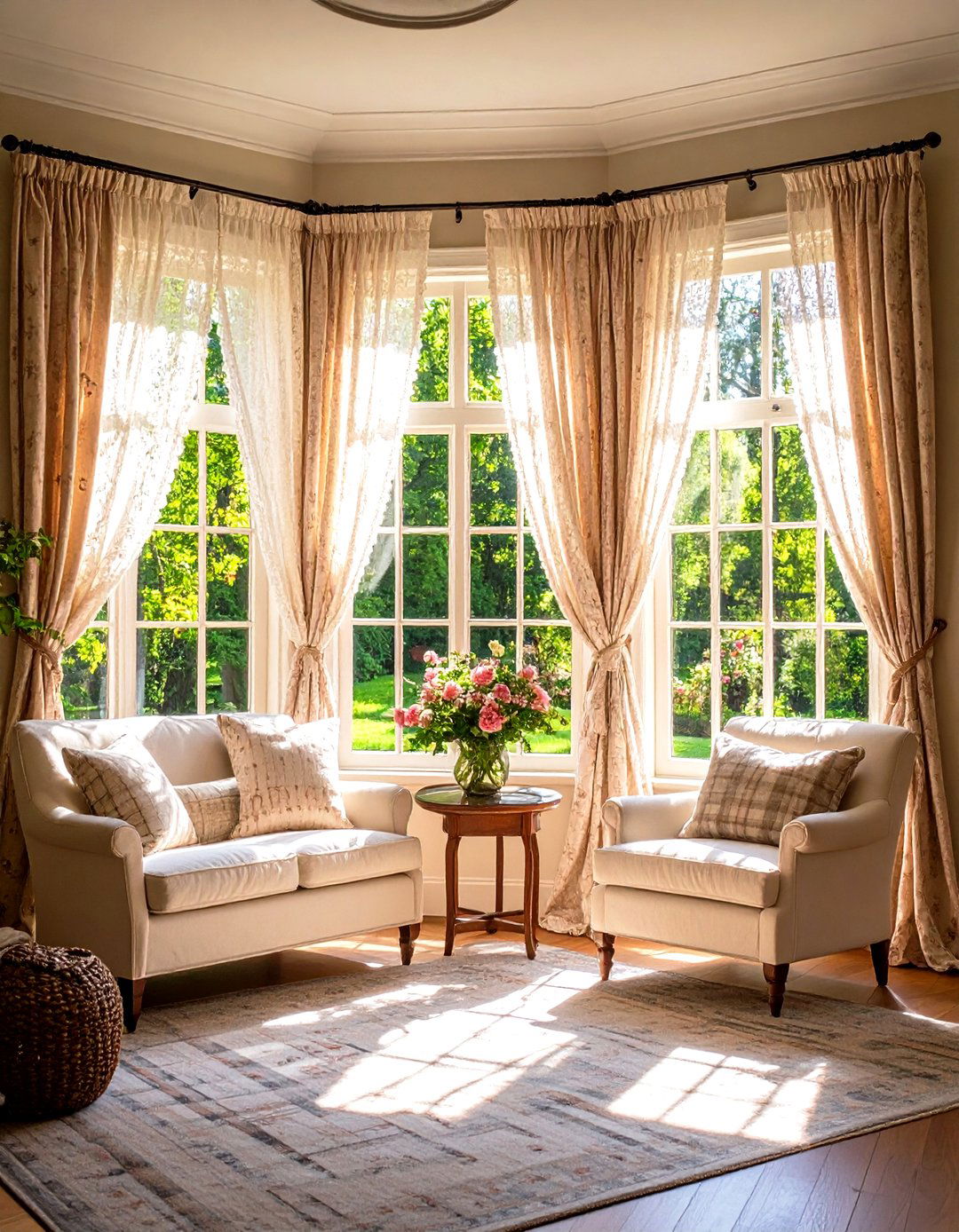
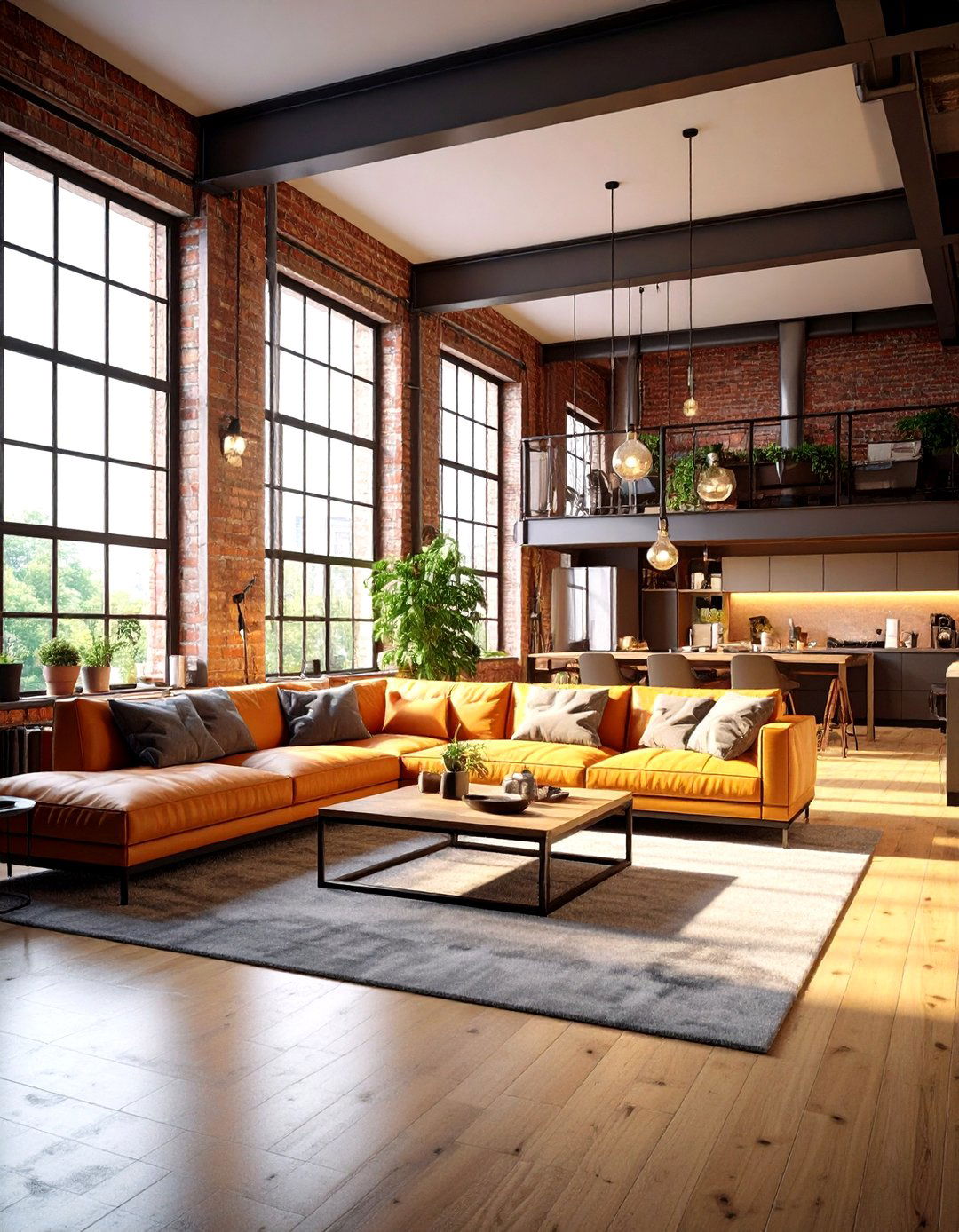
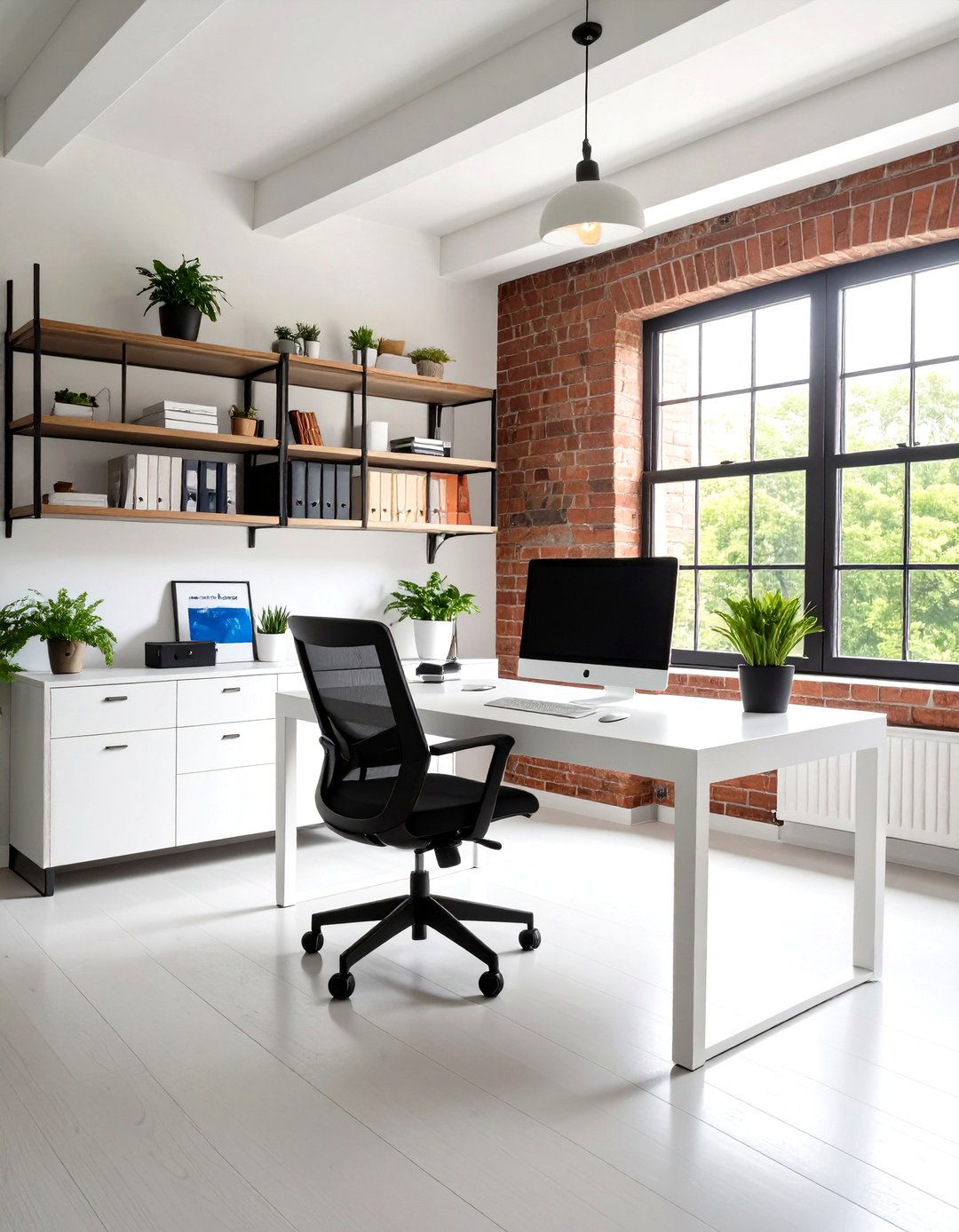
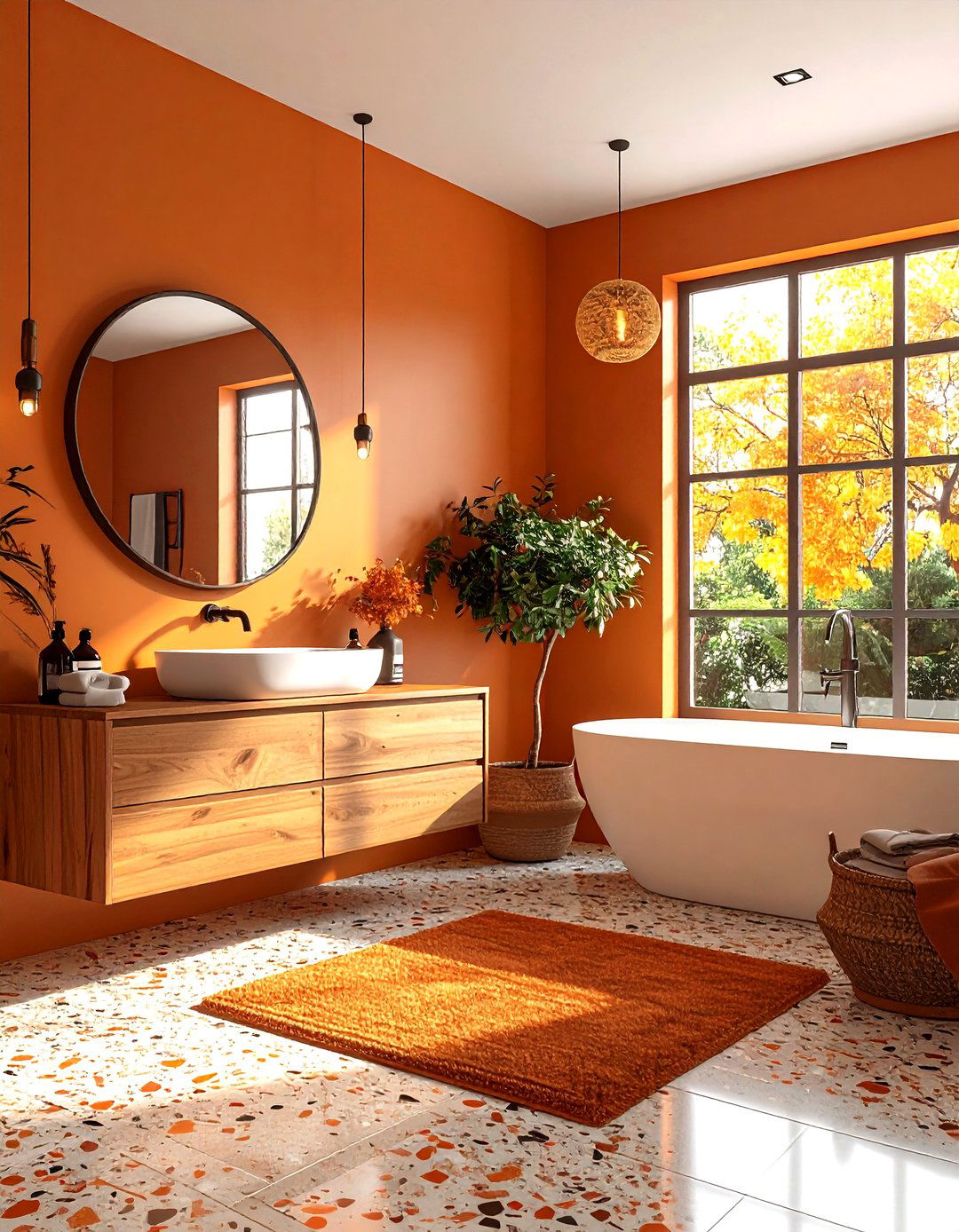
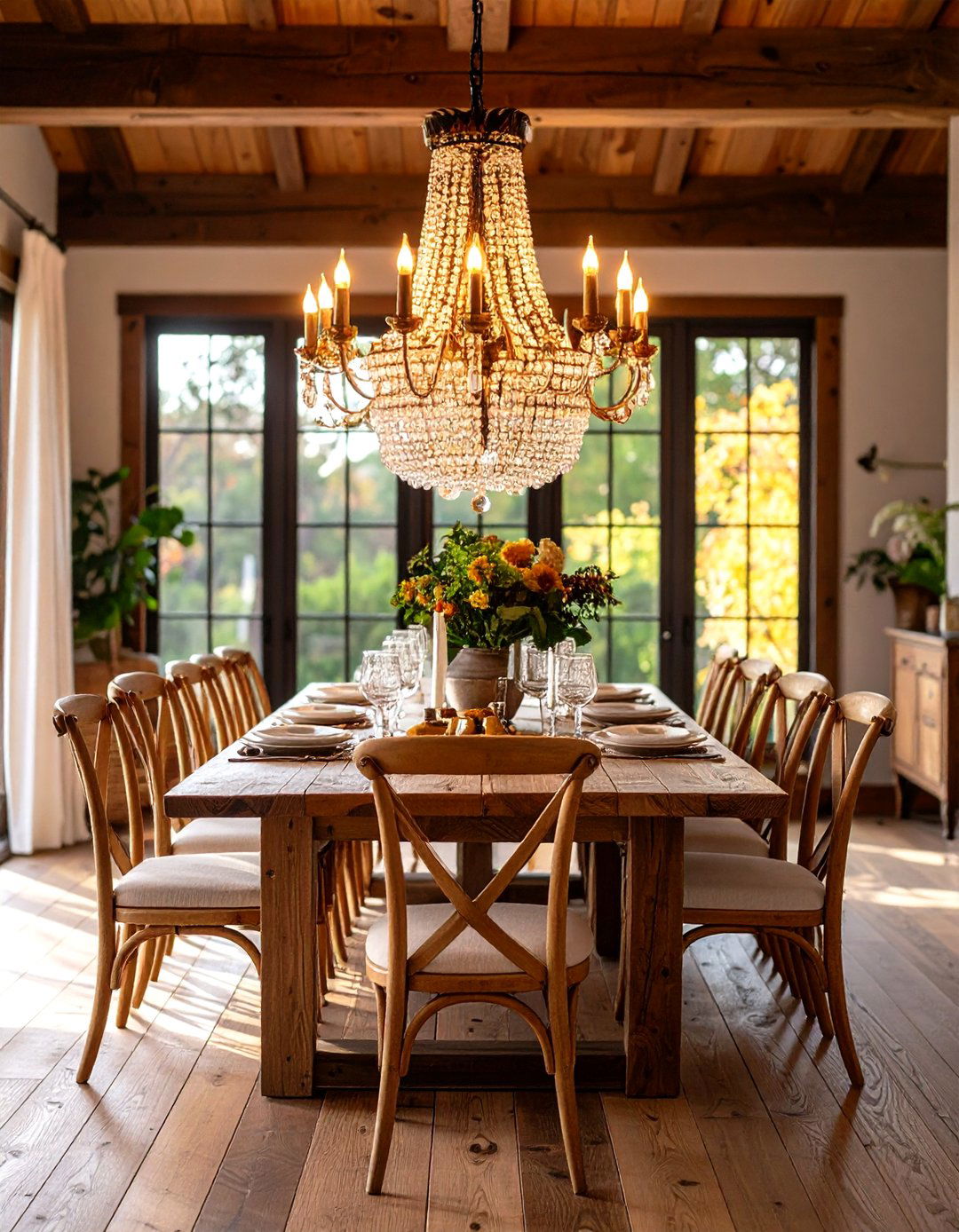
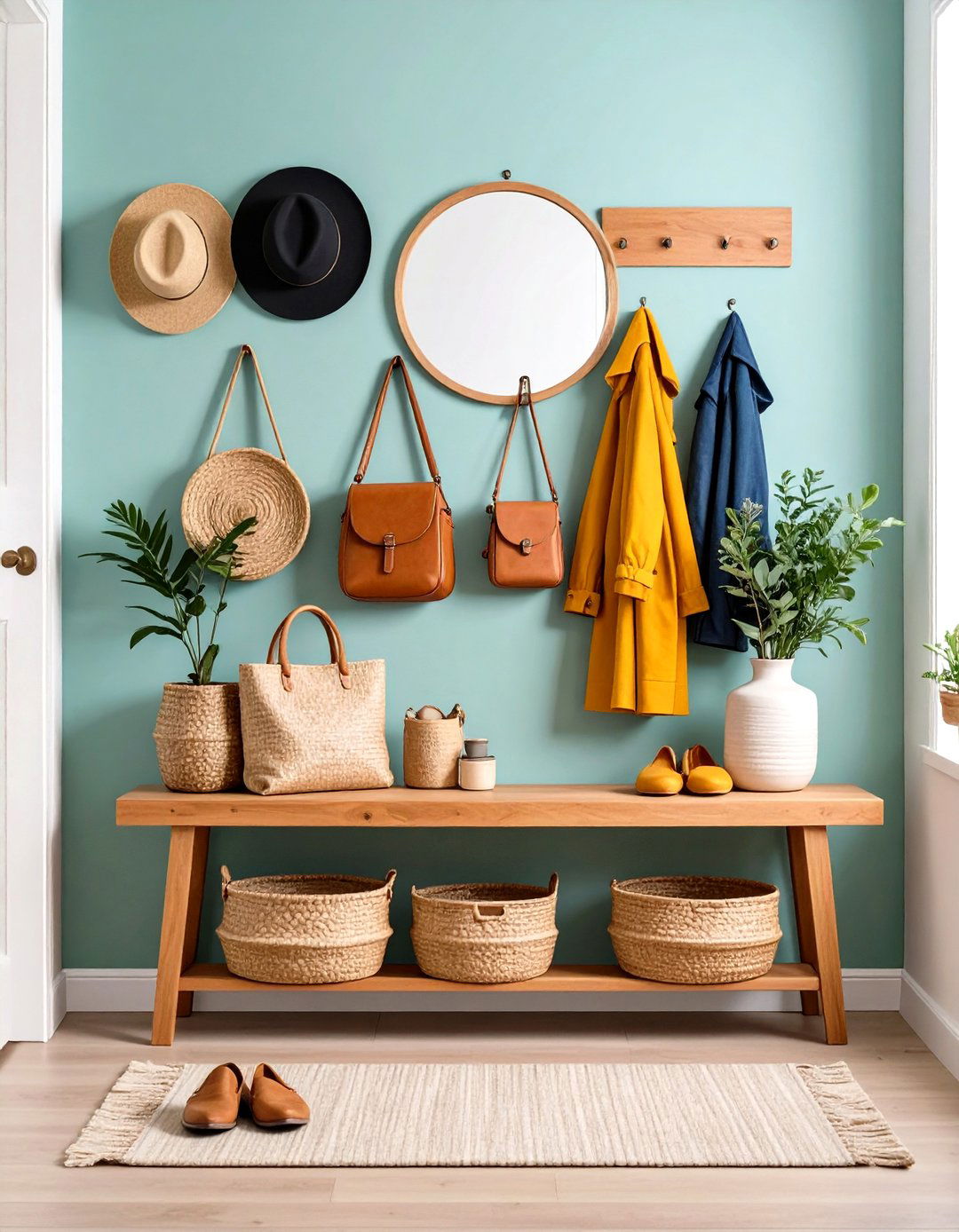
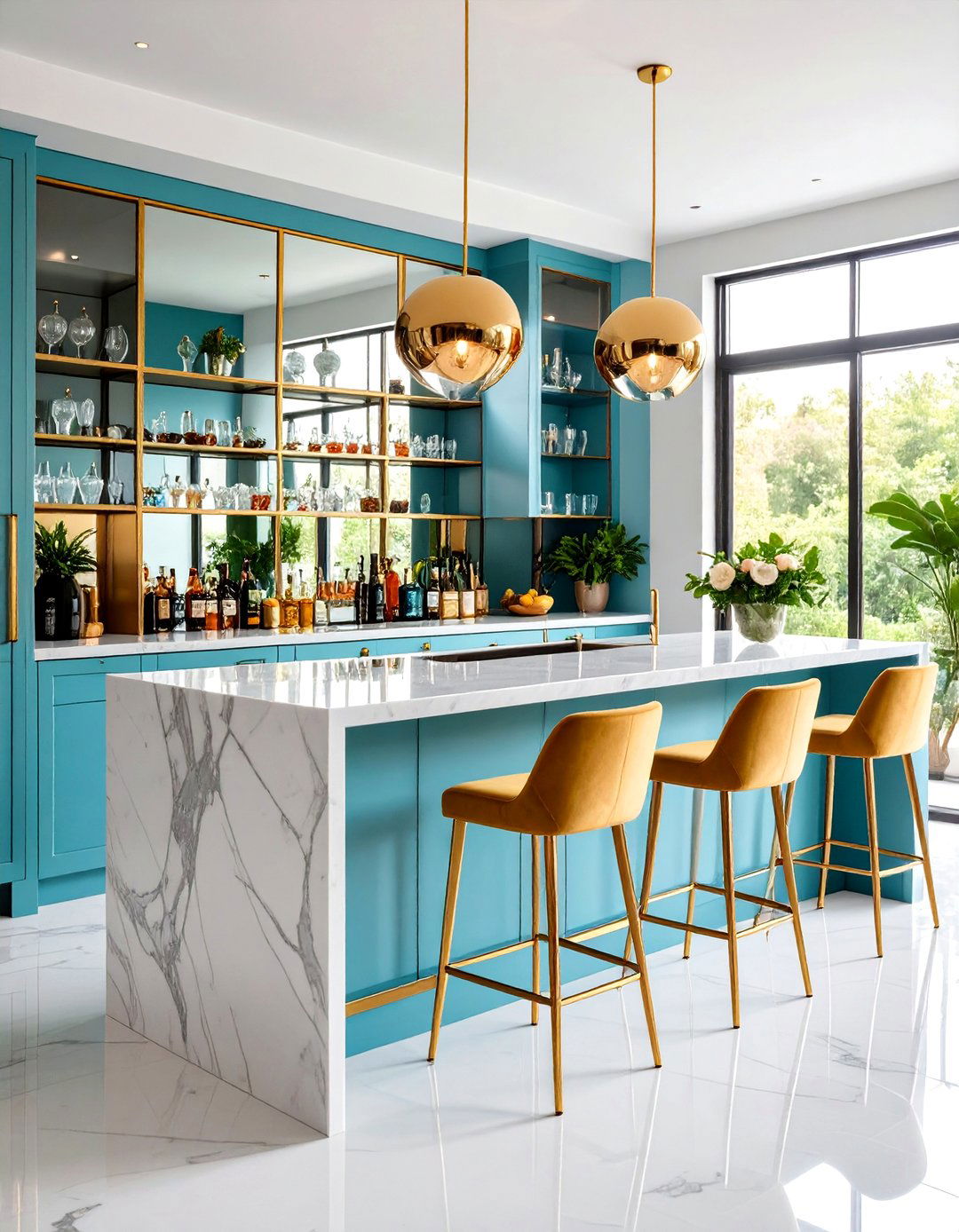
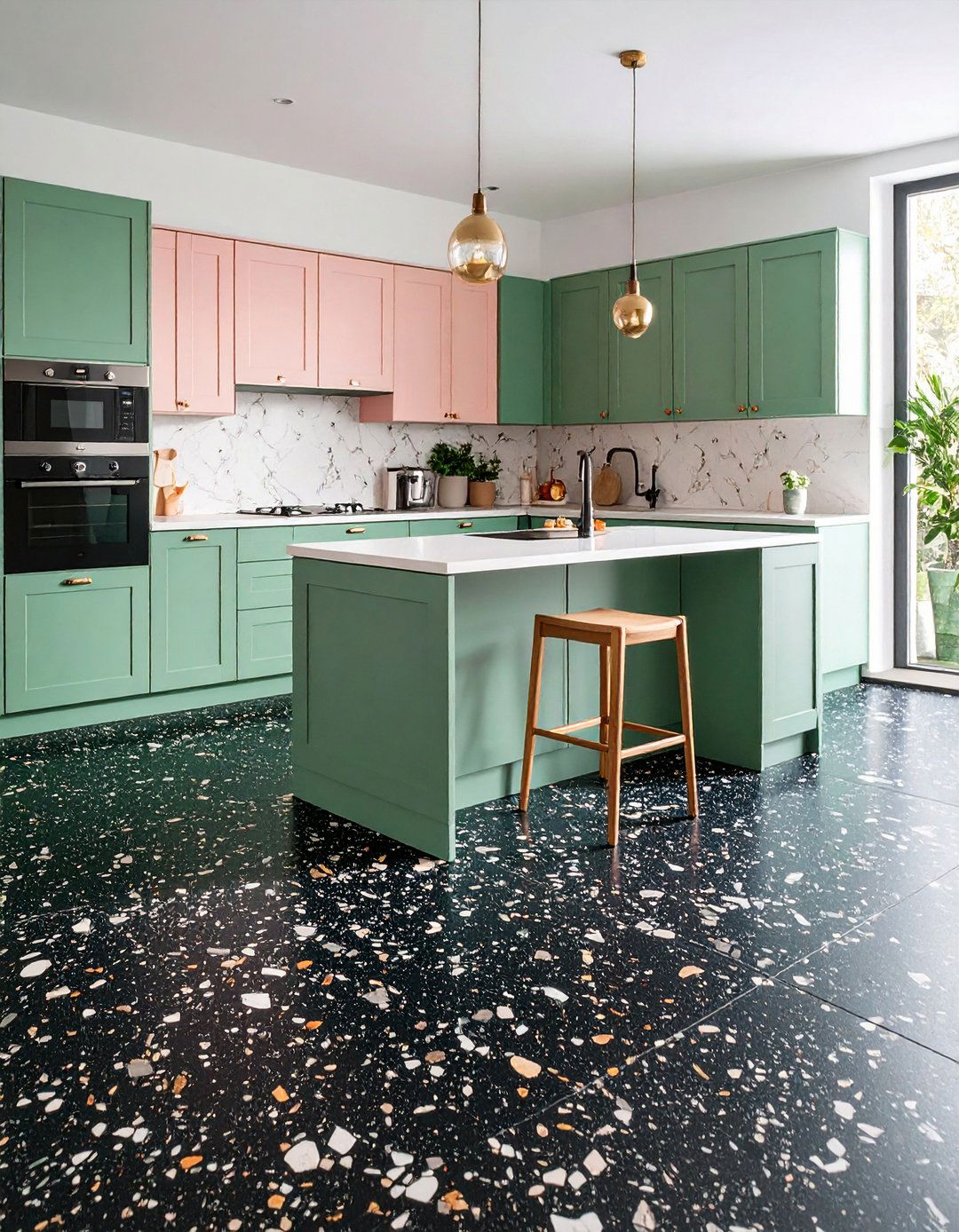
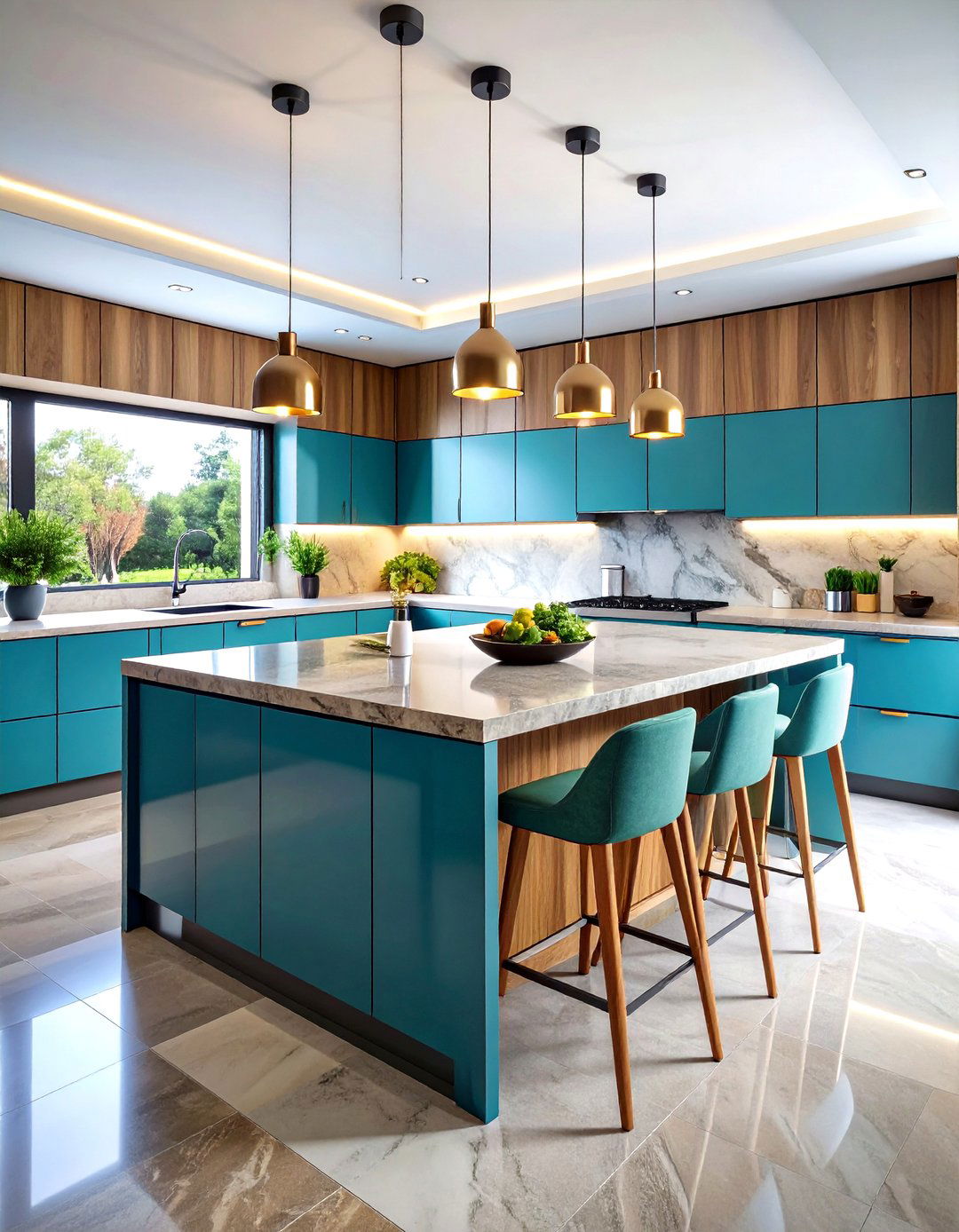
Leave a Reply